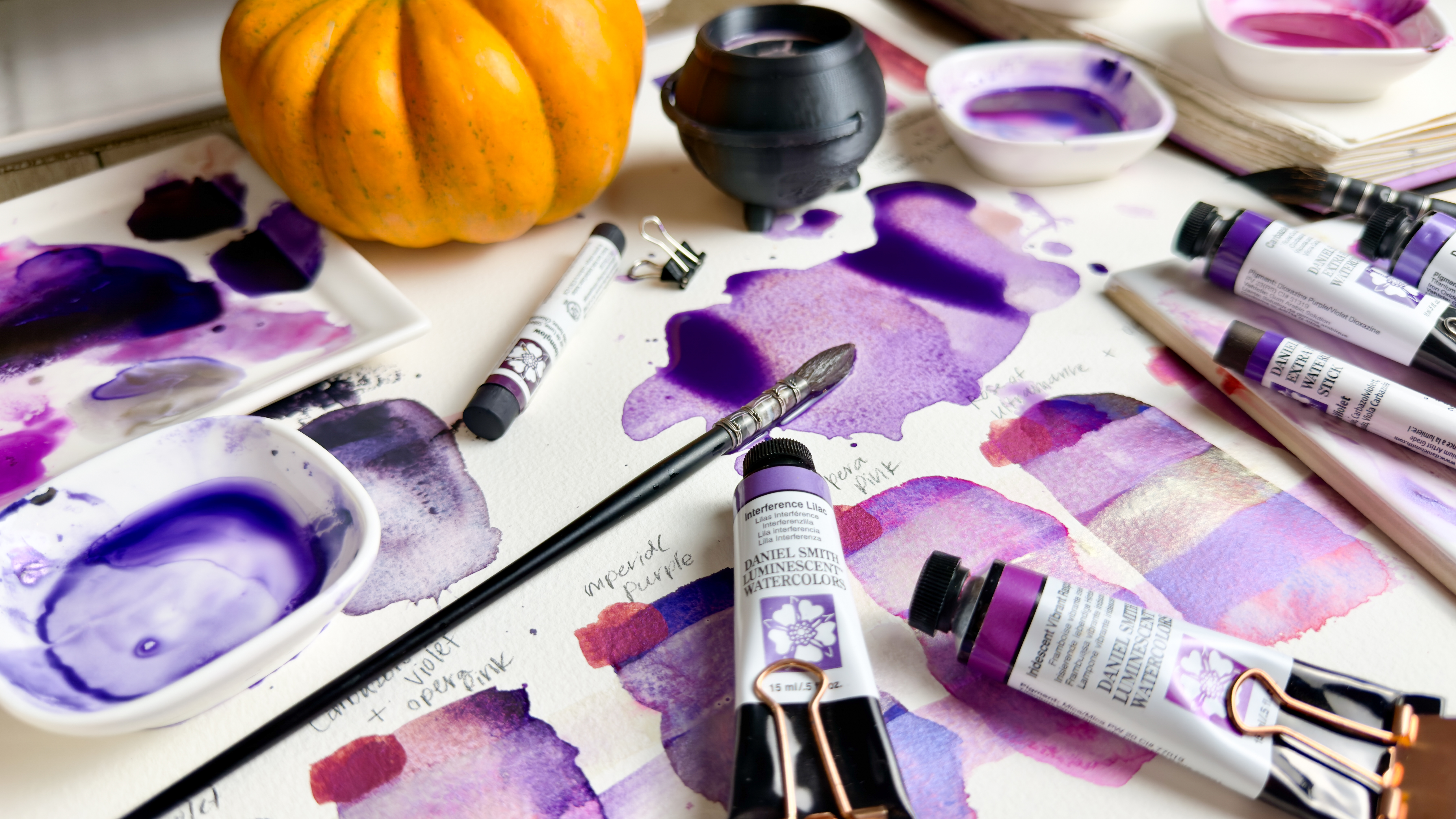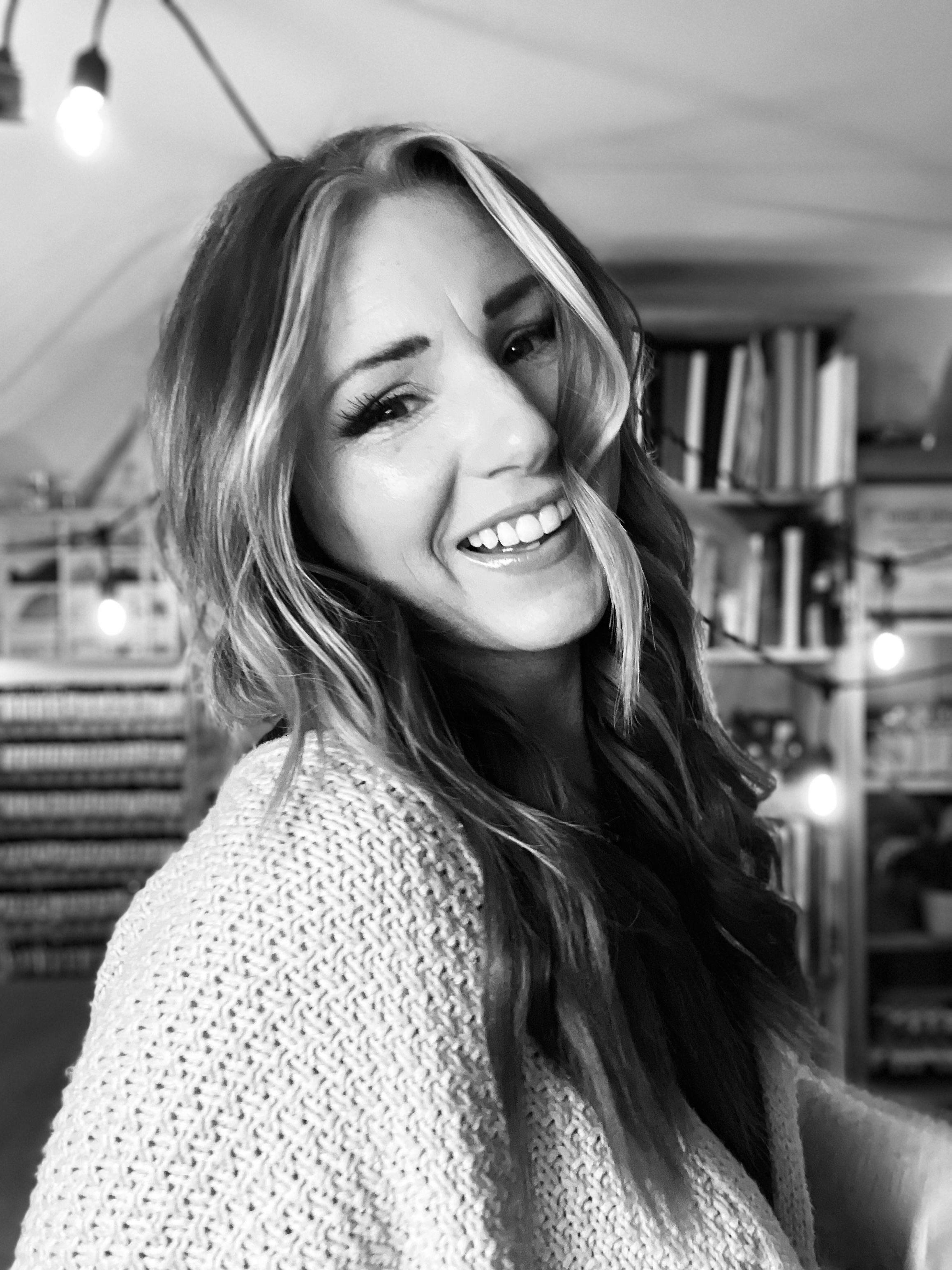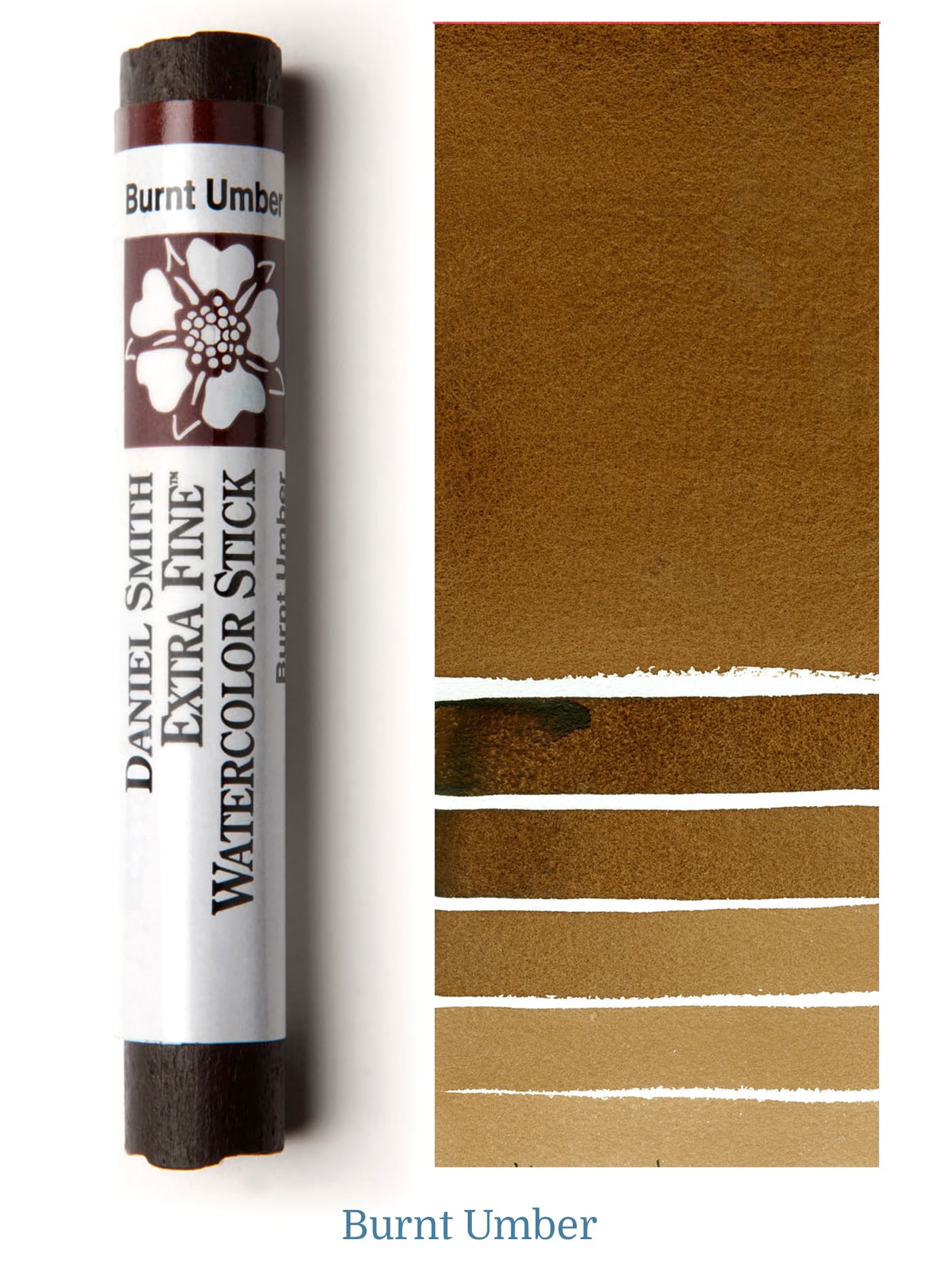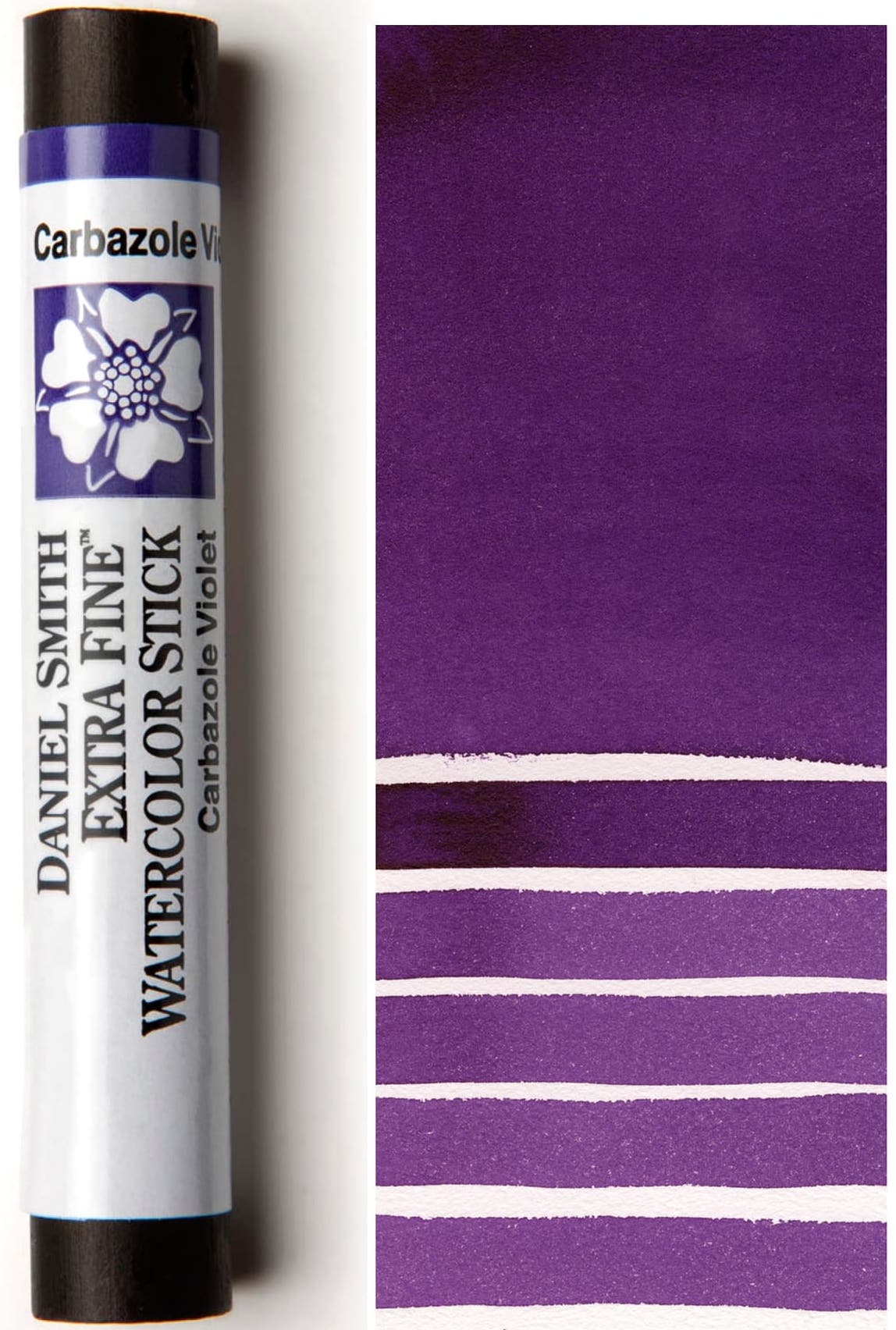Double, double, toil and trouble—pigment flow and sparkle bubble! This Halloween, I’m mixing up my favorite witchy watercolor brews: moody purples, glimmering violets, and shadows dancing with shimmer. Grab your DANIEL SMITH Extra Fine Watercolors and let’s stir up a little magic together!
DANIEL SMITH offers so many incredible purples and violets!
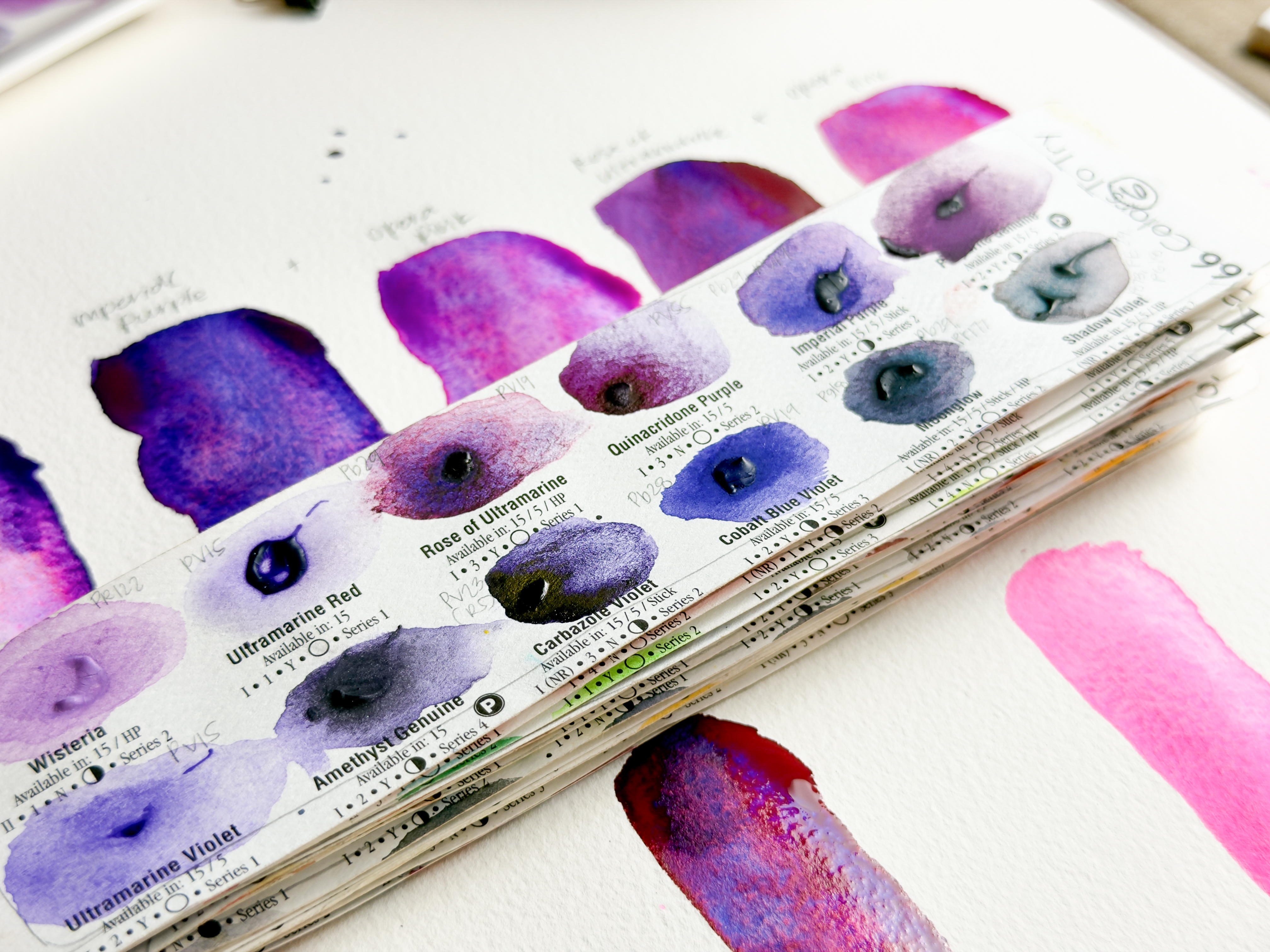
Just like you see here on my well-loved and divided up 266 Dot Card, the possibilities are endless!! It was almost impossible to choose! But, alas, I made my selection!
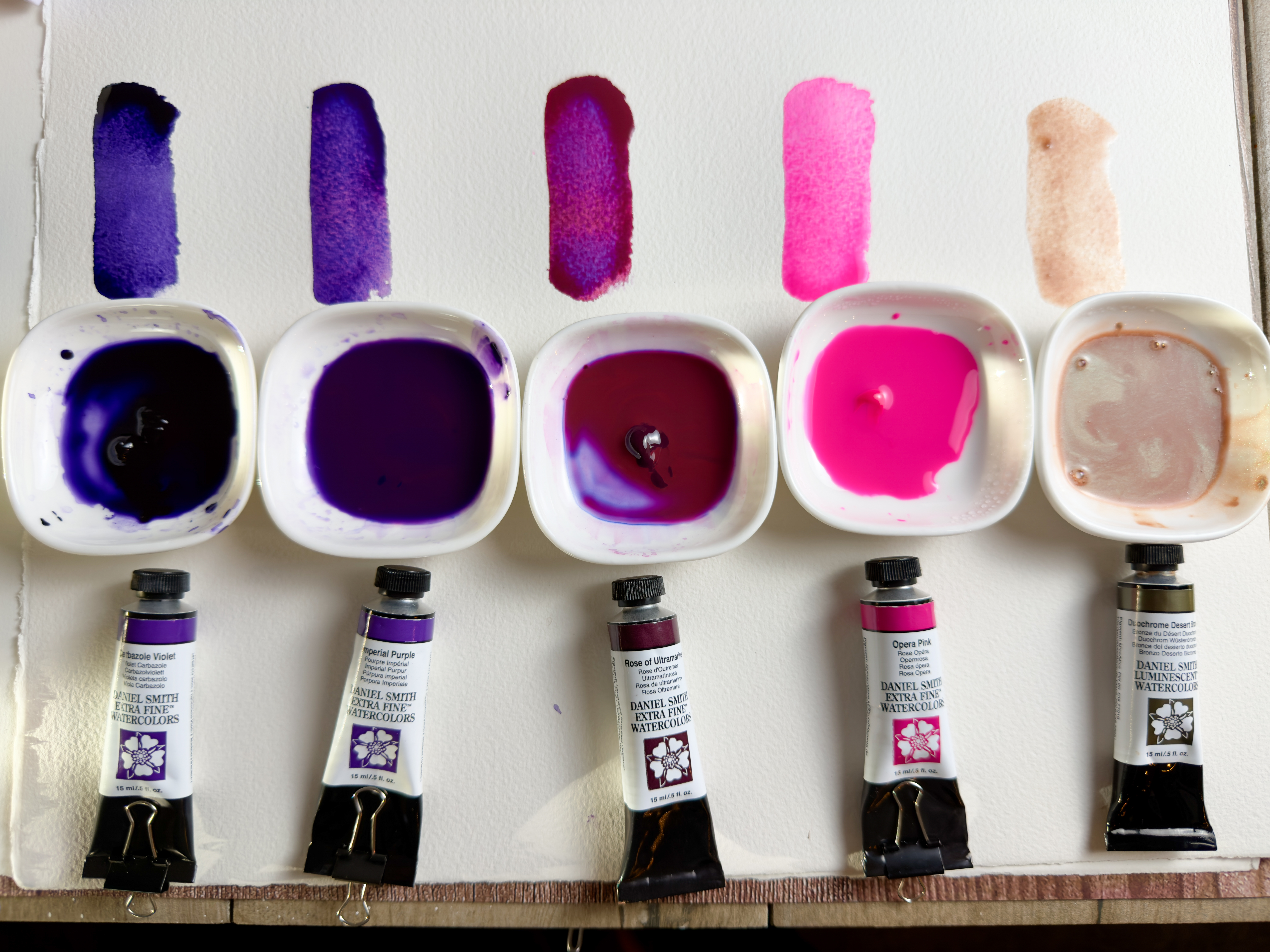
The colors I will be using for this spooky swatching session are:
- Карбазол фіолетовий
- Імперський фіолетовий
- Ультрамаринова троянда
- Опера Рожевий
- Moonglow
- Дуохром пустельна бронза (for ghoulish green color-shifting shimmer!)
- Дуохром ліловий
- Дуохромний фіолетовий фентезі
- Інтерференція Бузковий
- Райдужна яскрава малина
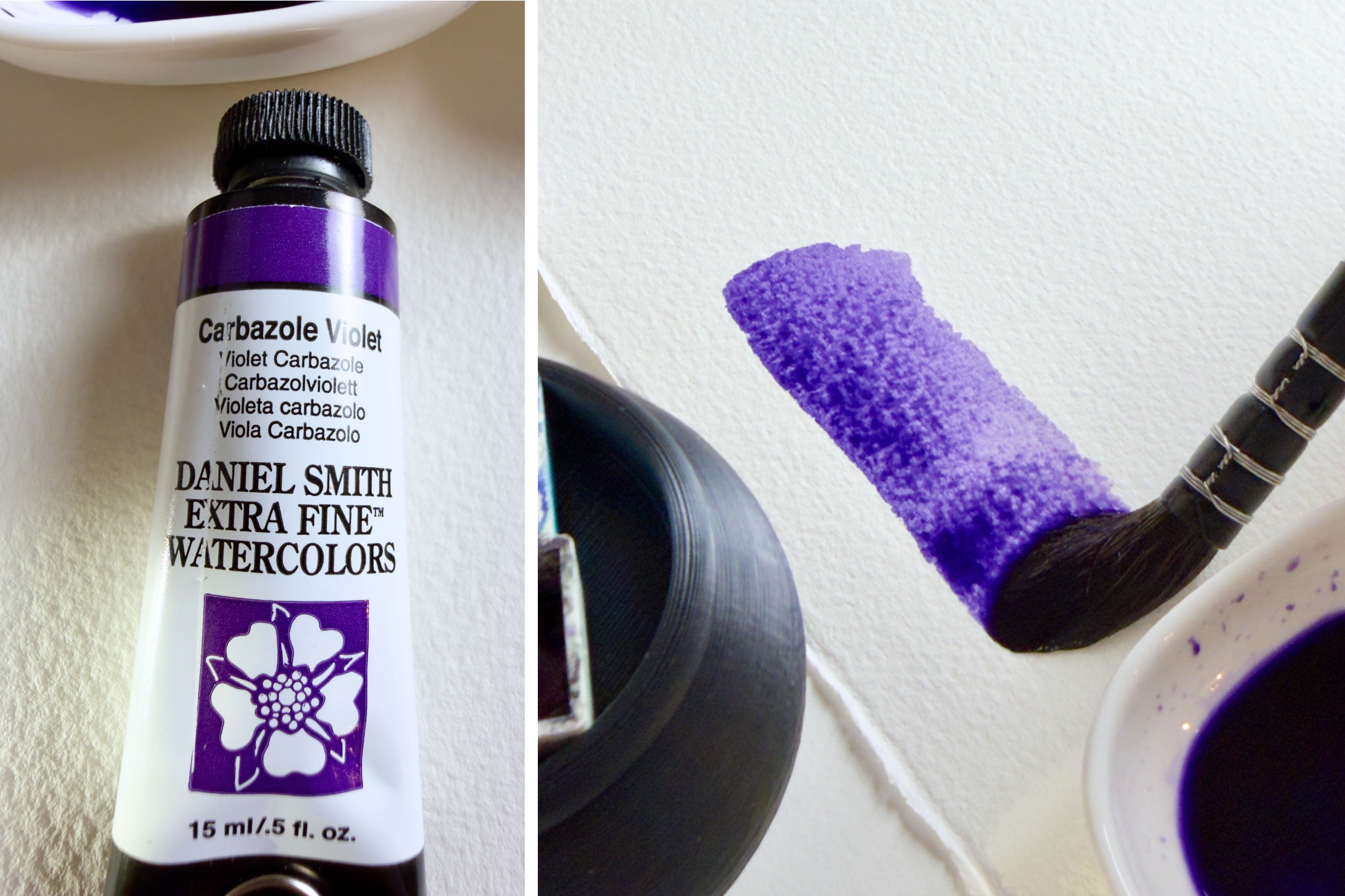
Dark as a midnight spell and twice as powerful, Carbazole Violet is pure drama on your palette. This deep, transparent violet flows like ink from a quill—intense, moody, and perfectly haunting. Let it wash into eerie shadows or brew with water for ghostly violets that seem to glow from within. A witch’s must-have for painting the night.
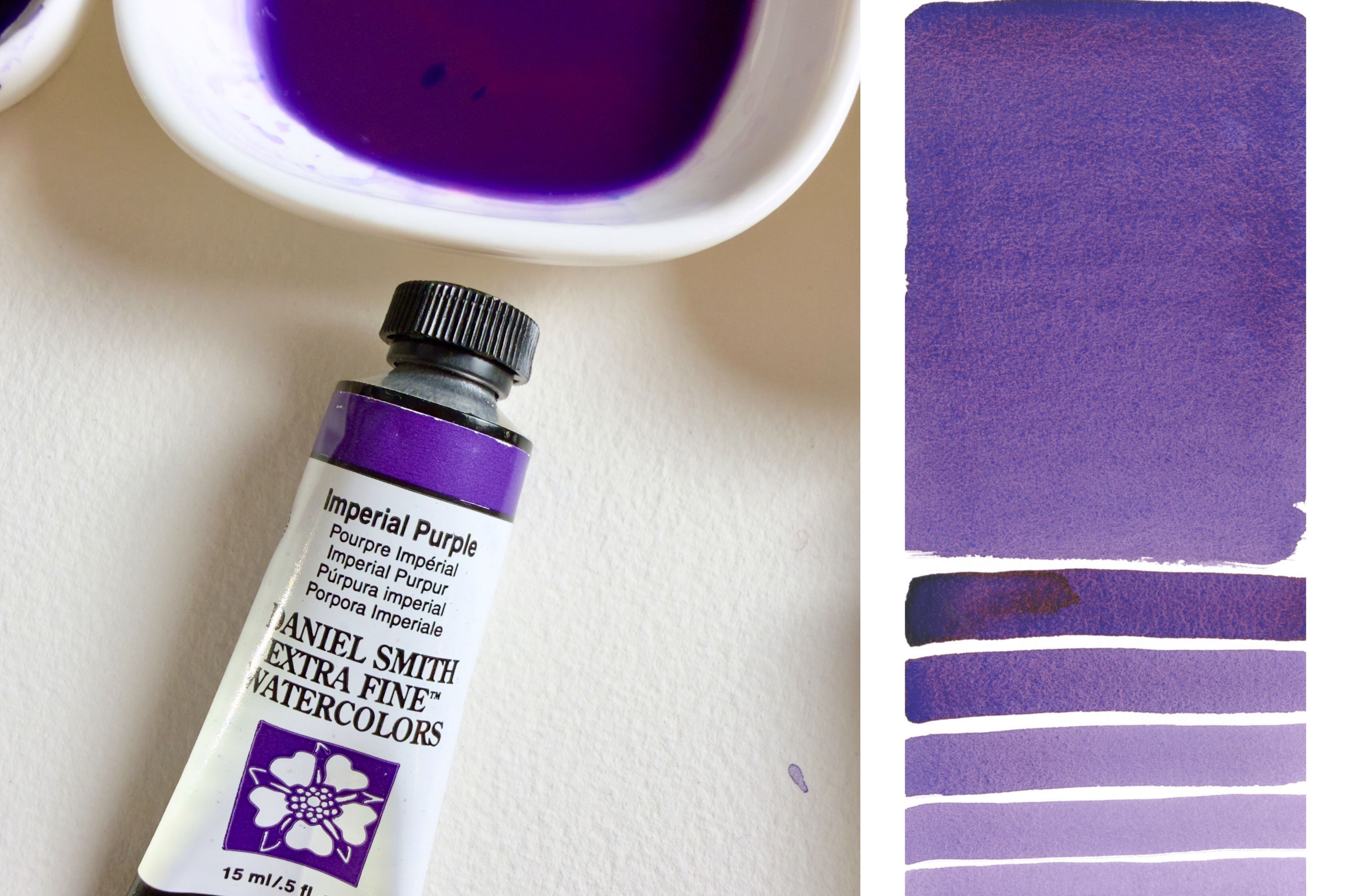
Imperial Purple reigns with rich, velvety depth—half mystery, half majesty. When wet, it blooms with royal drama; as it dries, it reveals hidden layers of crimson and blue, and even peekaboo hints of pink!
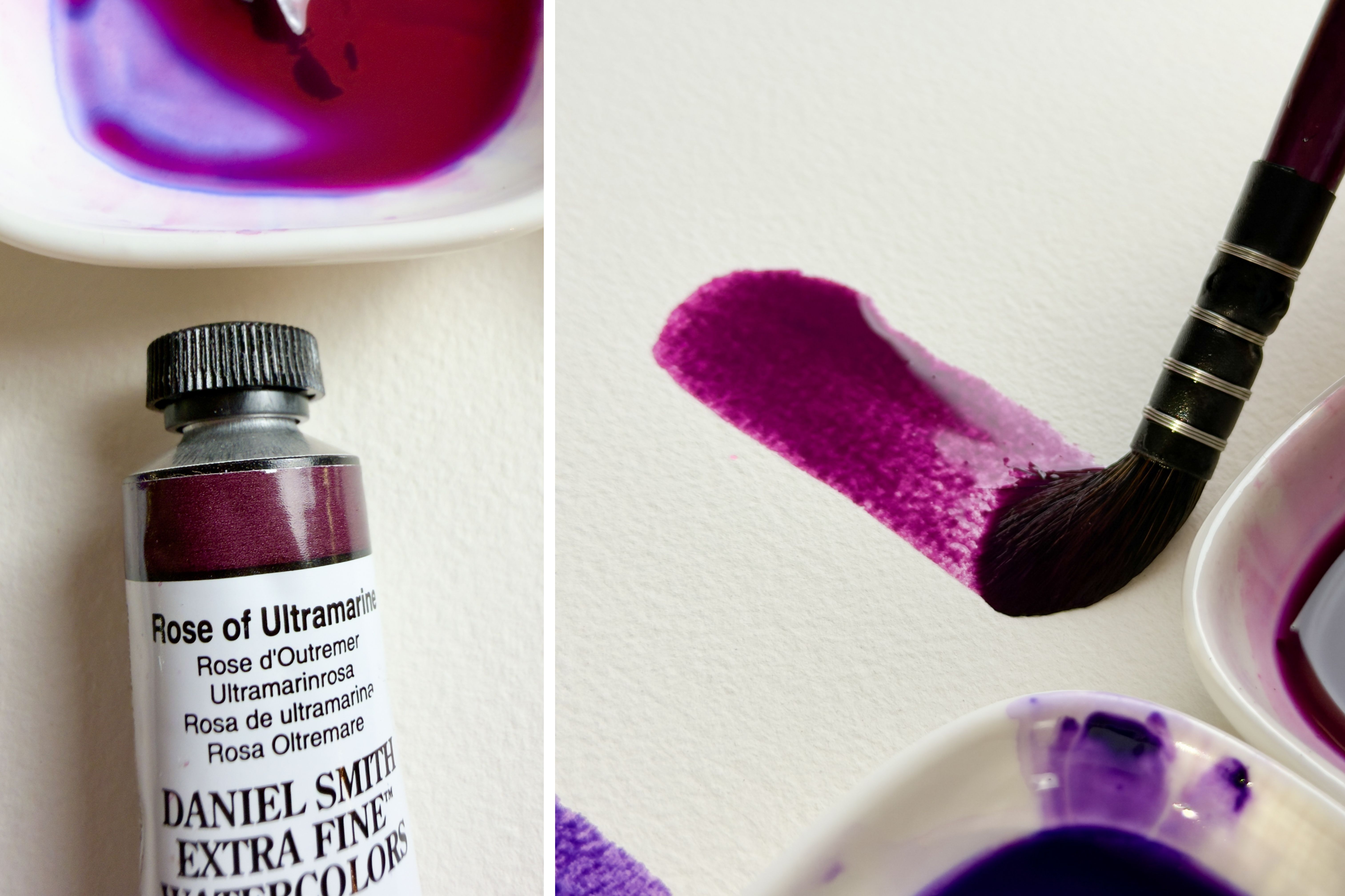
This beauty shifts from moody violet to rose in a single brushstroke. Rose of Ultramarine granulates into tiny galaxies of color—like stardust swirling in a potion bottle. It’s romantic and unpredictable, the kind of color that insists on painting itself.
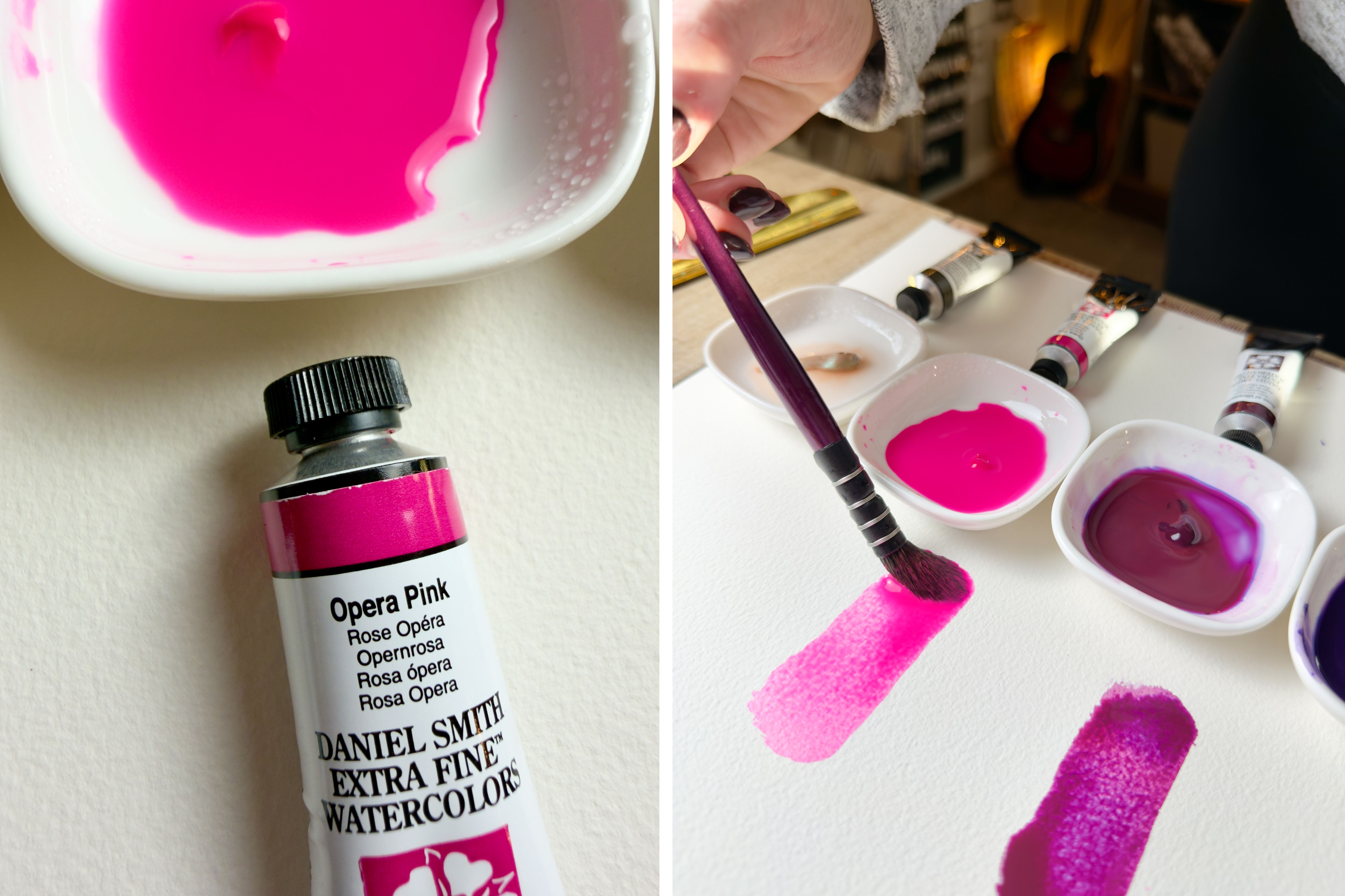
Every witch or warlock needs a burst of bright energy—the spark in your cauldron, the glow on a rose petal under the moon. It’s unapologetically bold, almost surreal in its intensity, and brings life (and a LOT of PINK!) to every mix. Mix with any blue, and you are in for a world of granulating violets and purples!!
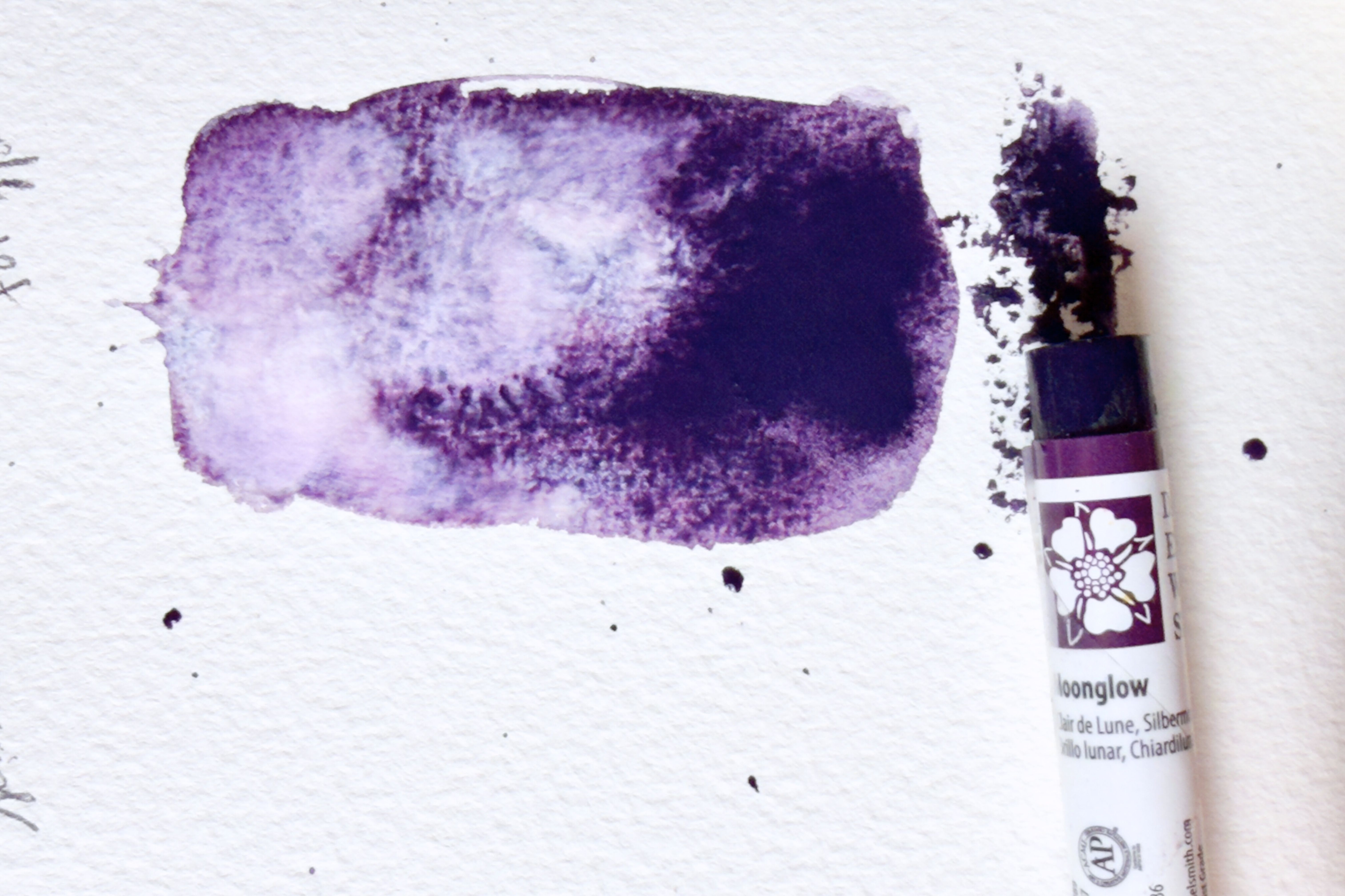
The name says it all—Moonglow is pure enchantment. A magical blend of three pigments, it separates into soft violets, cool blues, and smoky neutrals that shift like clouds across the night sky. It’s the perfect shadow for your haunted house or moonlit forest, offering depth, texture, and pure atmosphere in every wash. I love using this color in Акварельна паличка format! It’s like having a magic wand!
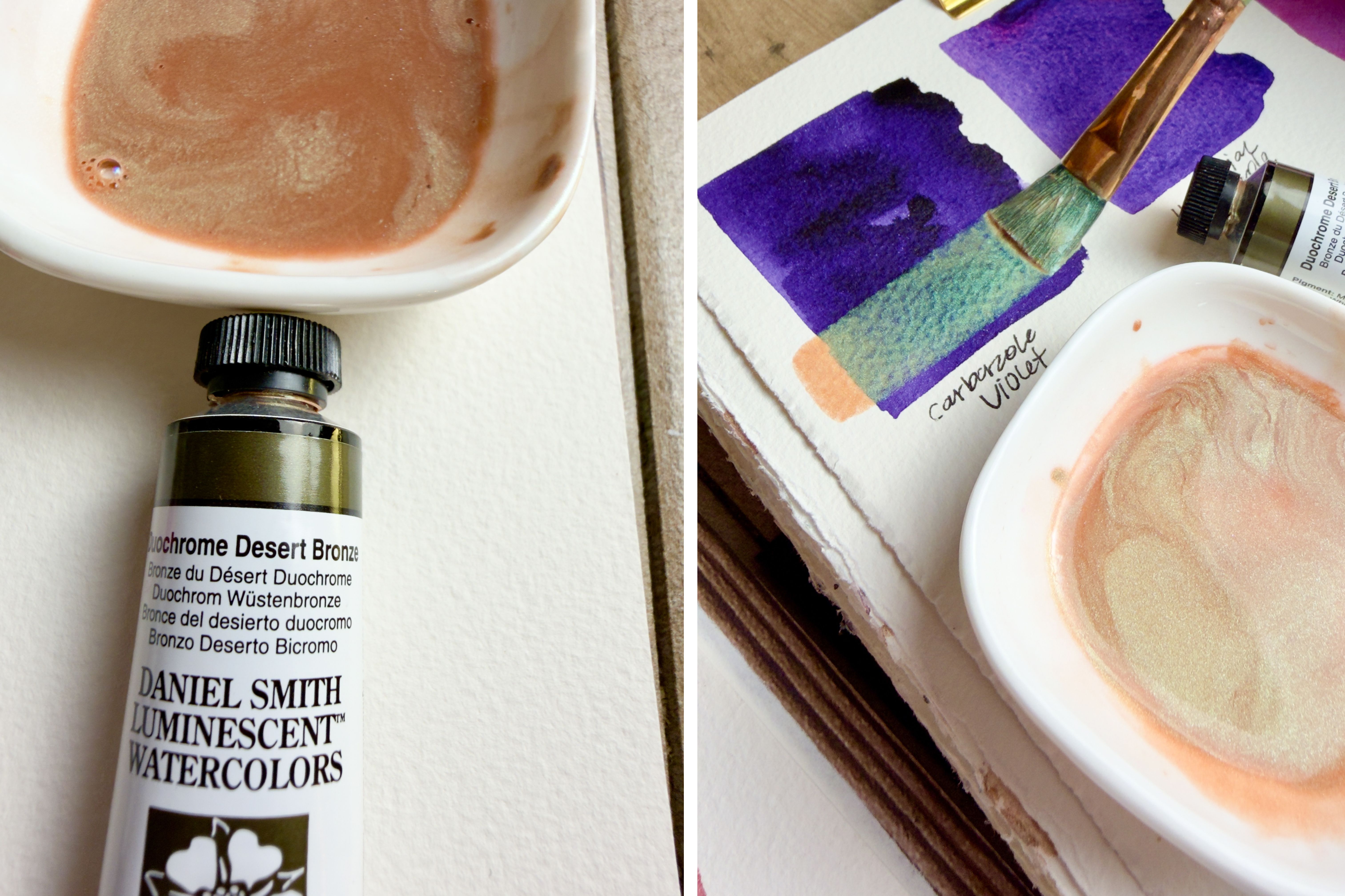
This eerie shimmer shifts from olive-bronze to ghostly green—like moonlight glancing off a potion bottle. It’s perfect for eerie highlights, ghoulish greens, and otherworldly effects. Try layering it over Moonglow or Carbazole Violet to make your mixes glint with GHOULISH green! I’m OBSESSED!
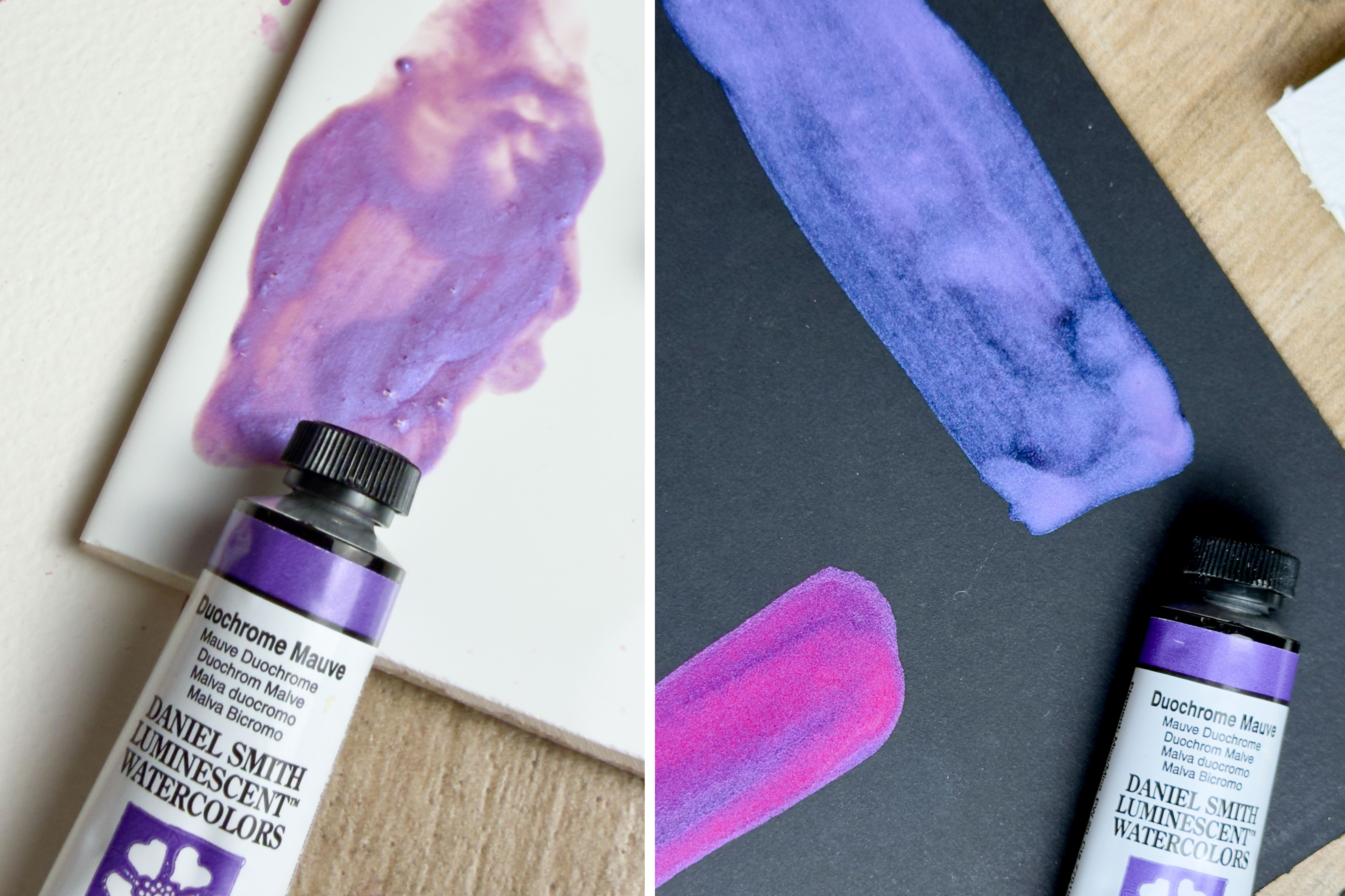
Soft and mysterious, Duochrome Mauve whispers between violet and rose with a subtle metallic sheen. It’s like candlelight—a color that glimmers quietly but irresistibly. Add it to shadows or petals when you want your painting to sparkle with magic
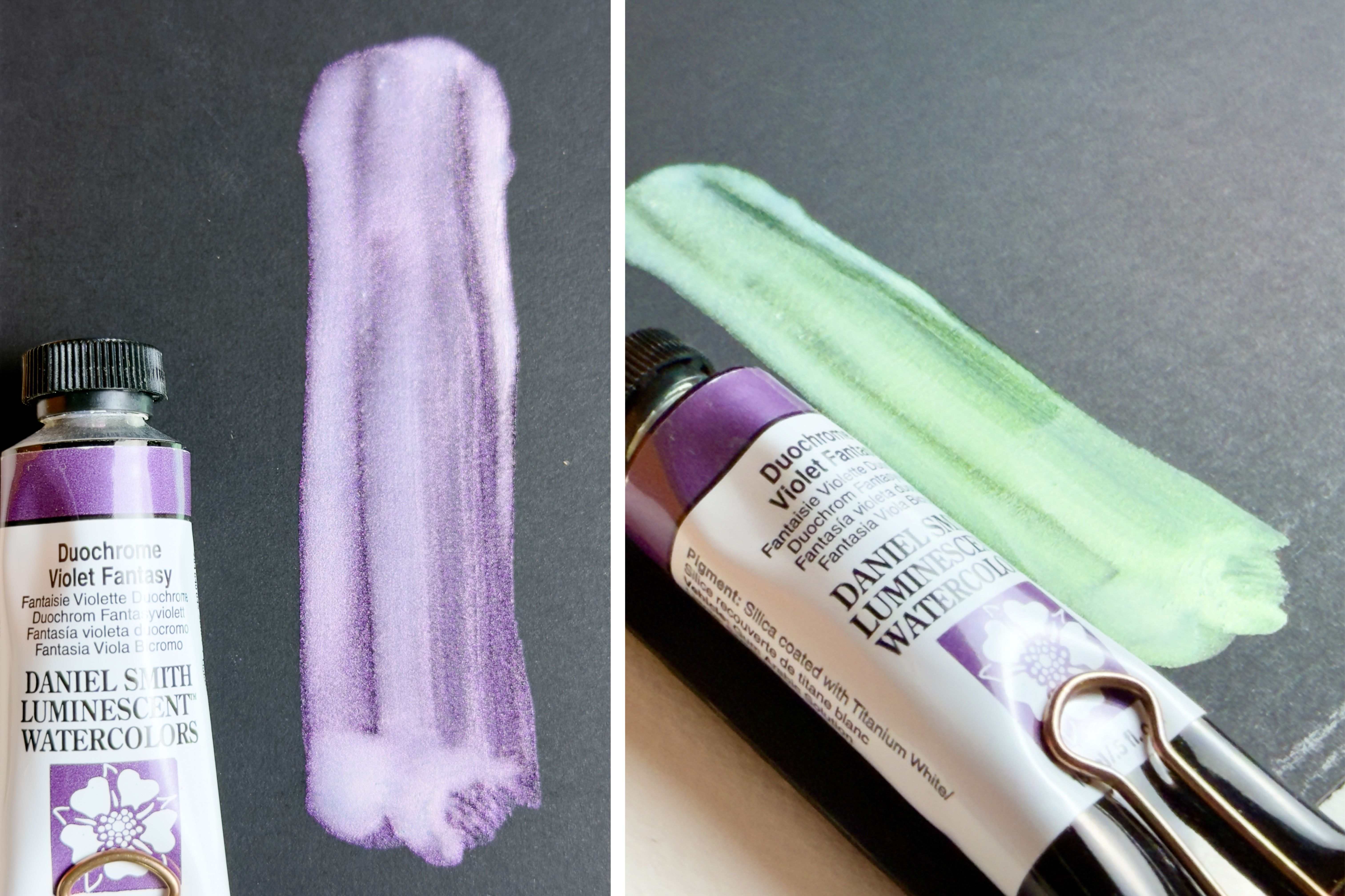
As its name promises, this one’s pure enchantment. Duochrome Violet Fantasy shifts between amethyst and copper-green, dancing in the light like fairy dust. Layer it over darker washes and watch it reveal itself only when the paper tilts—like a secret between you and your art. I audibly gasped the first time I used this color!
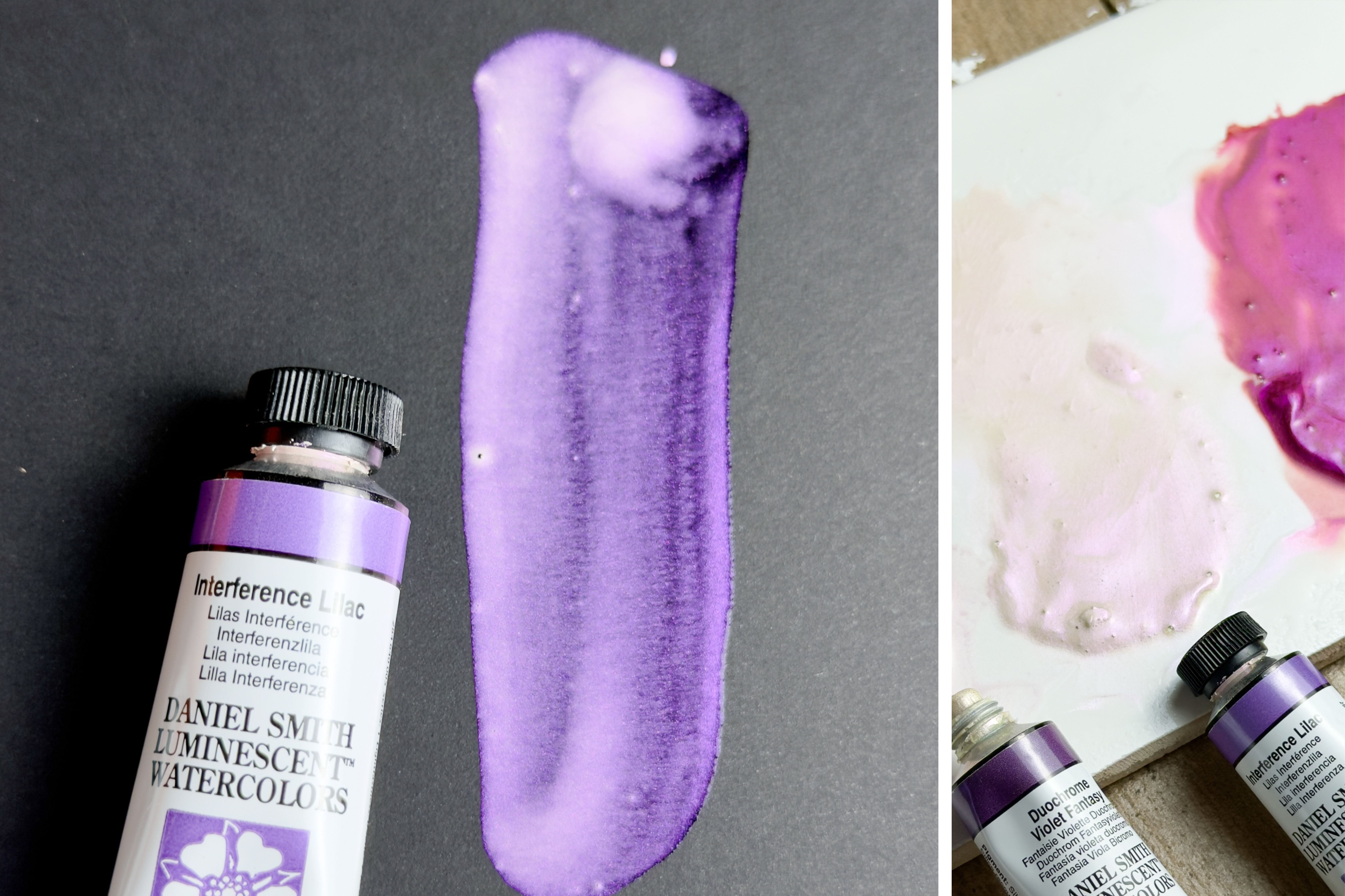
Delicate but supernatural, Interference Lilac appears white at first glance… until it catches the light. Then—poof!—it flashes a spectral lilac shimmer. Use it to create ghostly highlights, ethereal mist, or the faint glow of moonlight across a spellbook page. Try layering it over darker colors to watch it GLOW!
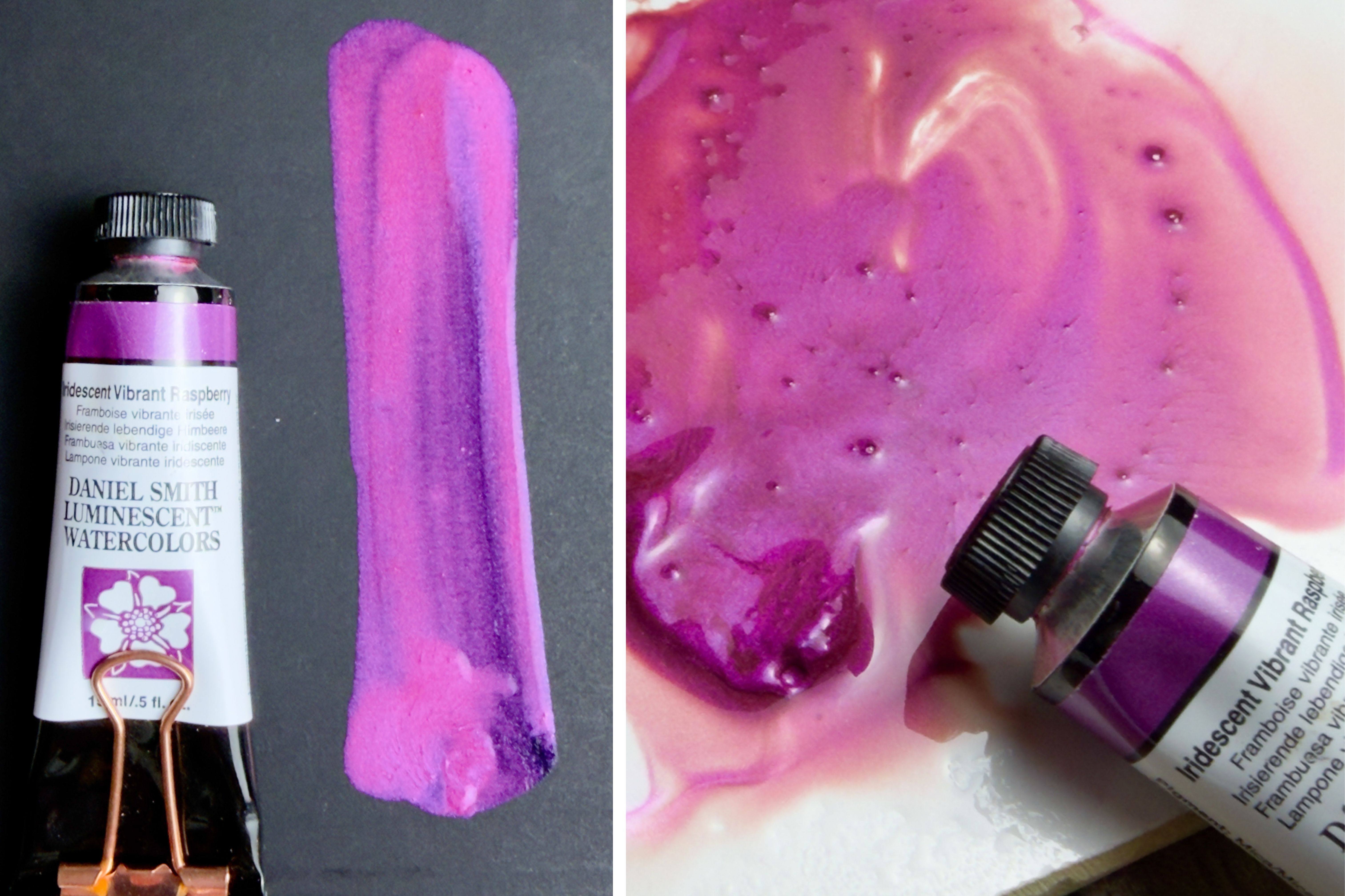
Iridescent Vibrant Raspberry’s metallic pink shimmer adds a mischievous sparkle wherever it lands—whether in a rosy cheek, a crystal vial, or a glinting potion. It’s impossible to ignore and dangerously delightful. It was almost too much for my camera to capture!
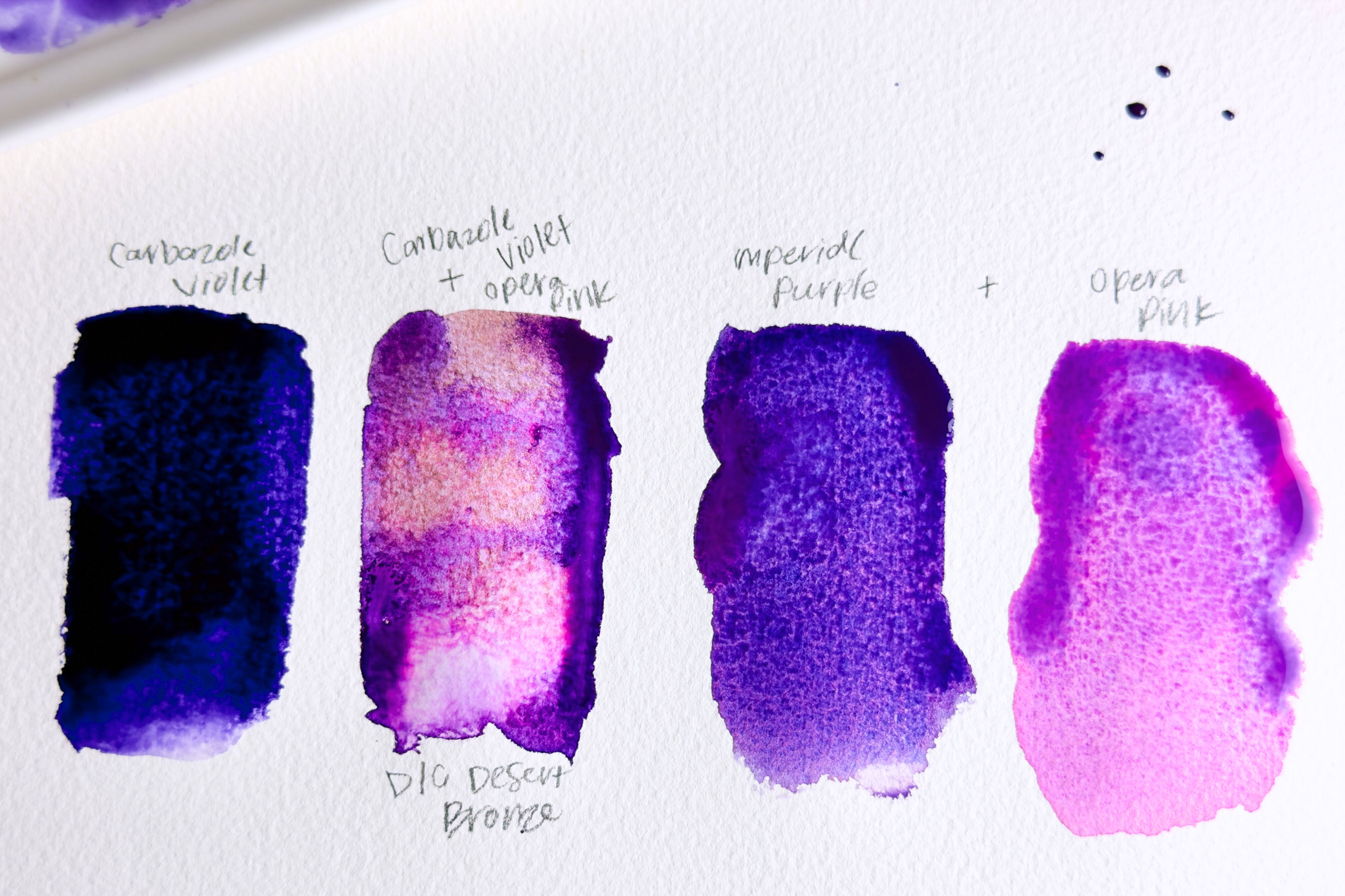
Now for the fun part—making the mixing magic happen! I started by pairing Opera Pink with my moody purples—Carbazole Violet, Imperial Purple, and Rose of Ultramarine—to see what kind of spells they’d cast together. Once the swatches dried, I layered the Luminescent Watercolors over the top—each shimmering glaze adding its own supernatural twist. Under shifting light, the Duochromes and Iridescents awaken, revealing ghostly greens, violet sparks, and otherworldly pinks. It’s pure color alchemy—the kind that makes you want to paint by candlelight.
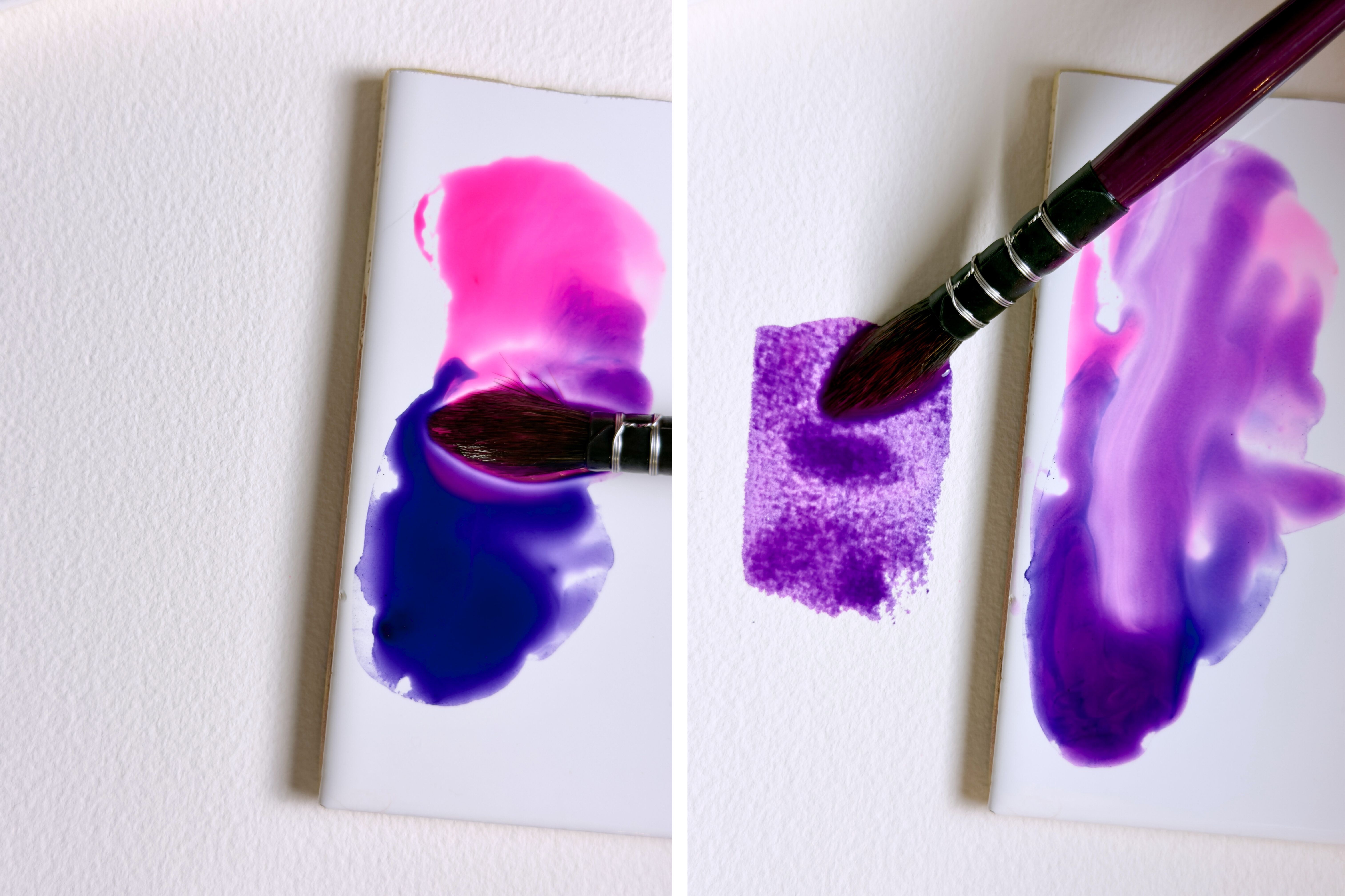
And now let’s drop in a little bit of Duochrome Desert Bronze wet-in-wet and watch what happens…
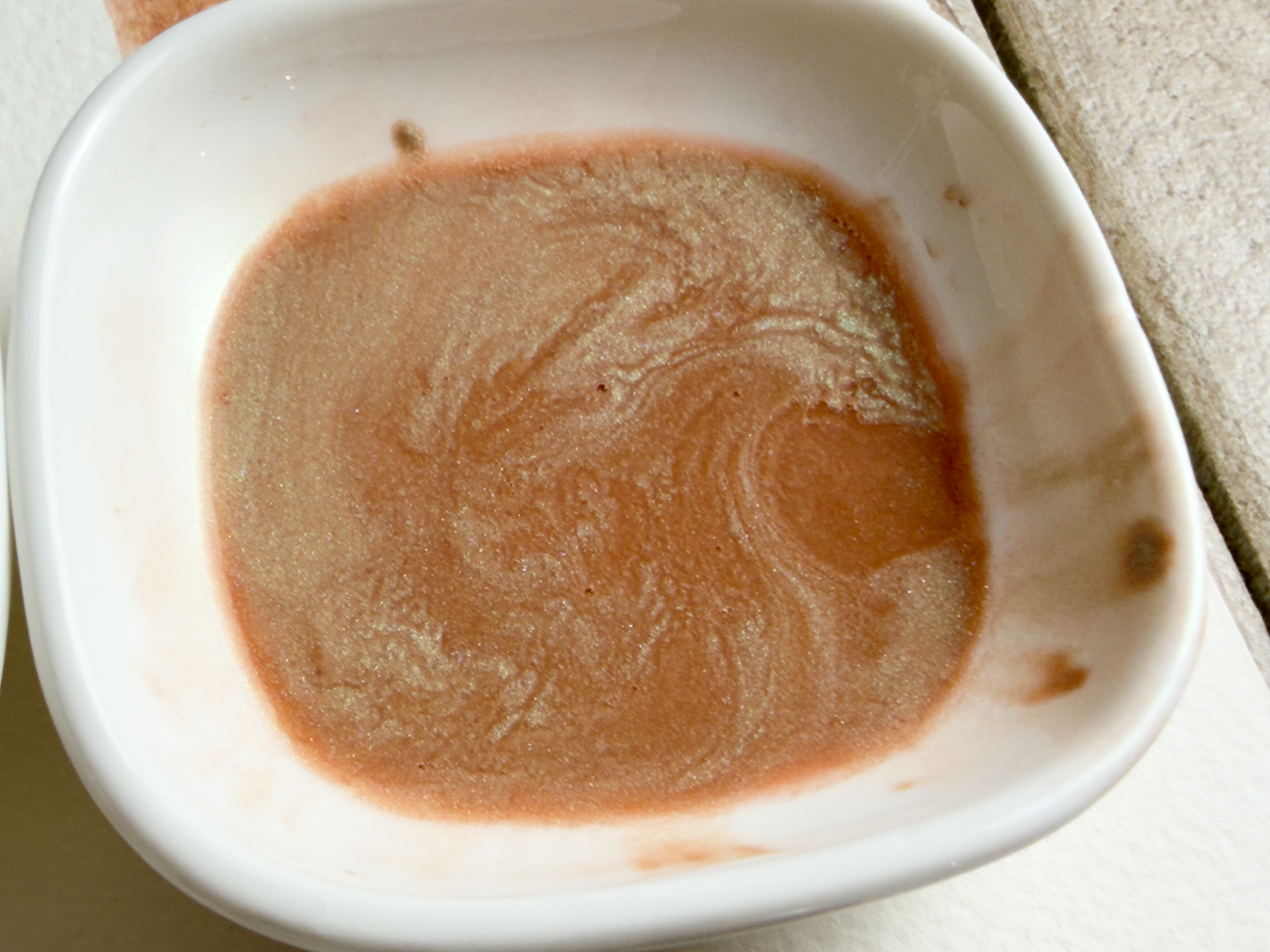
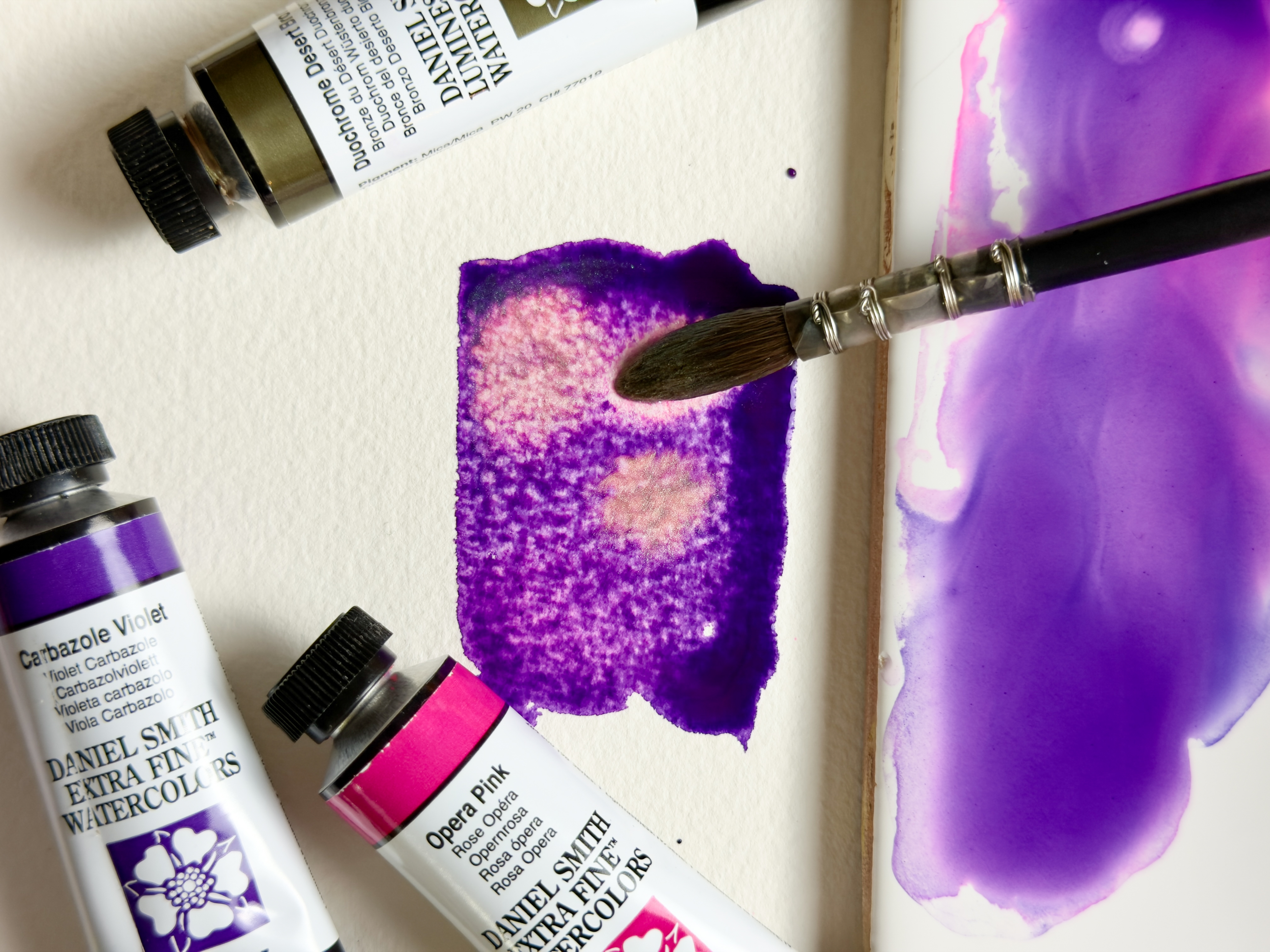
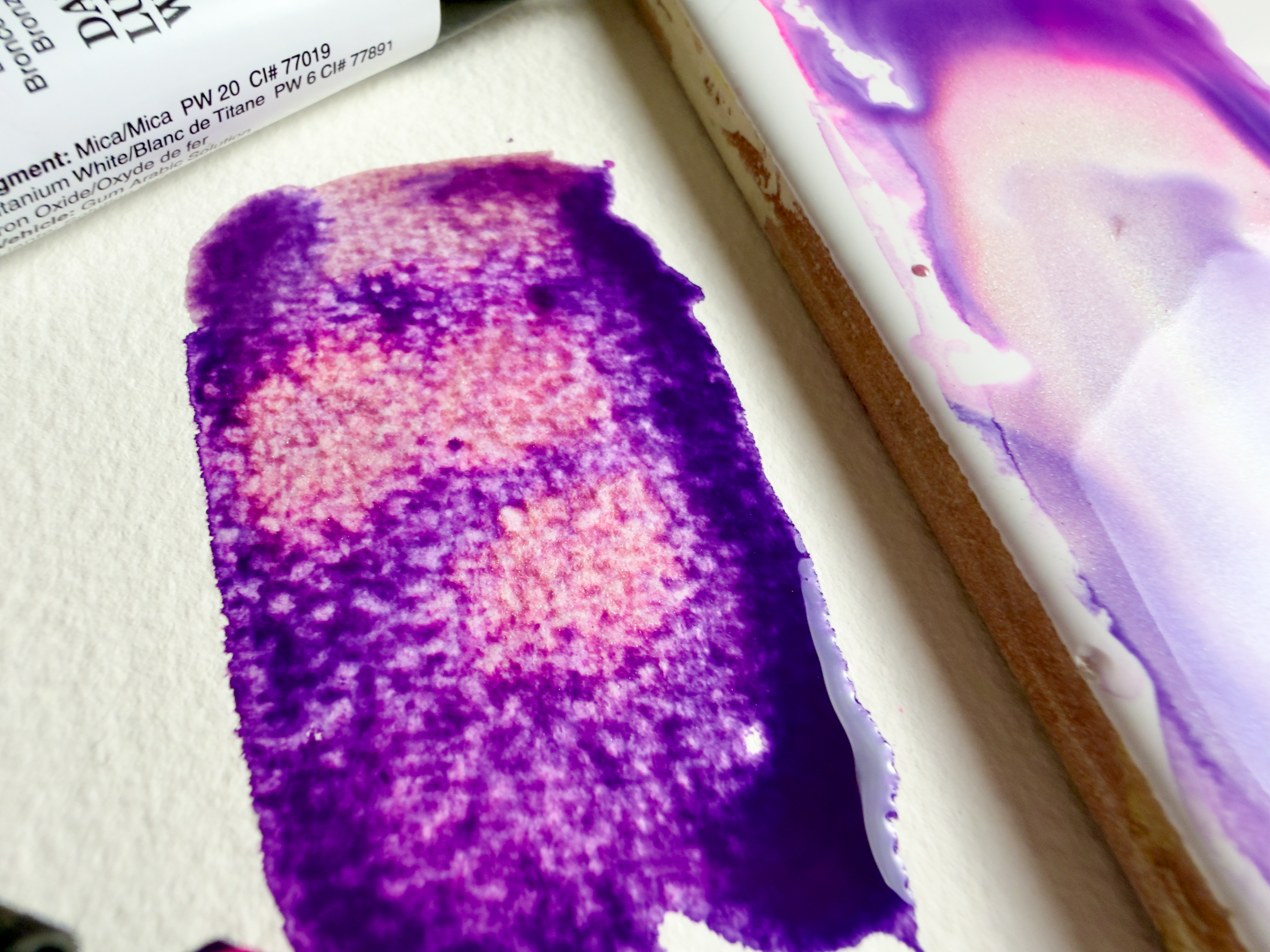
The Duochrome Desert Bronze “pushes” the Carbazole Violet out of the way and reveals the Opera Pink pigments underneath!
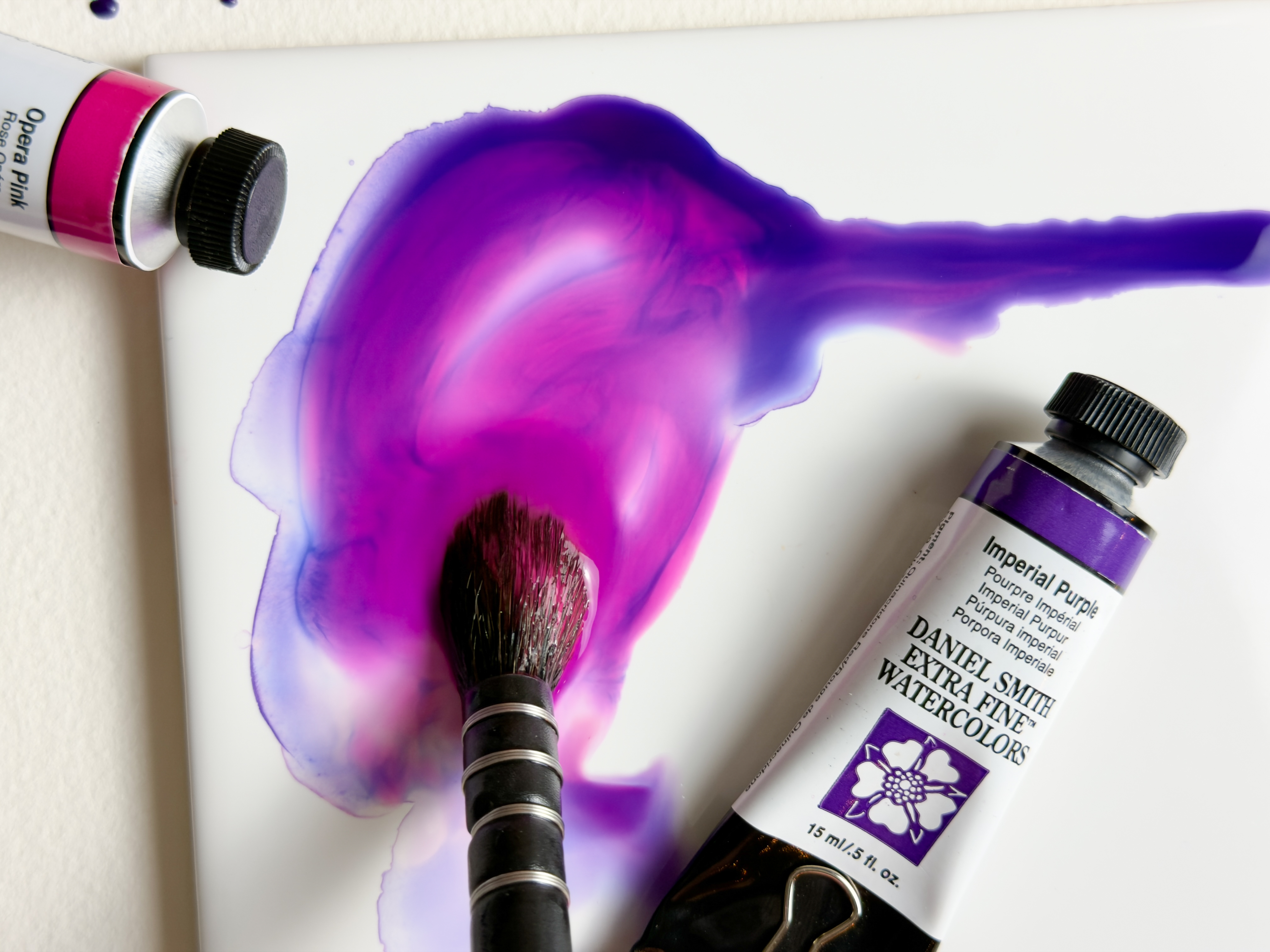
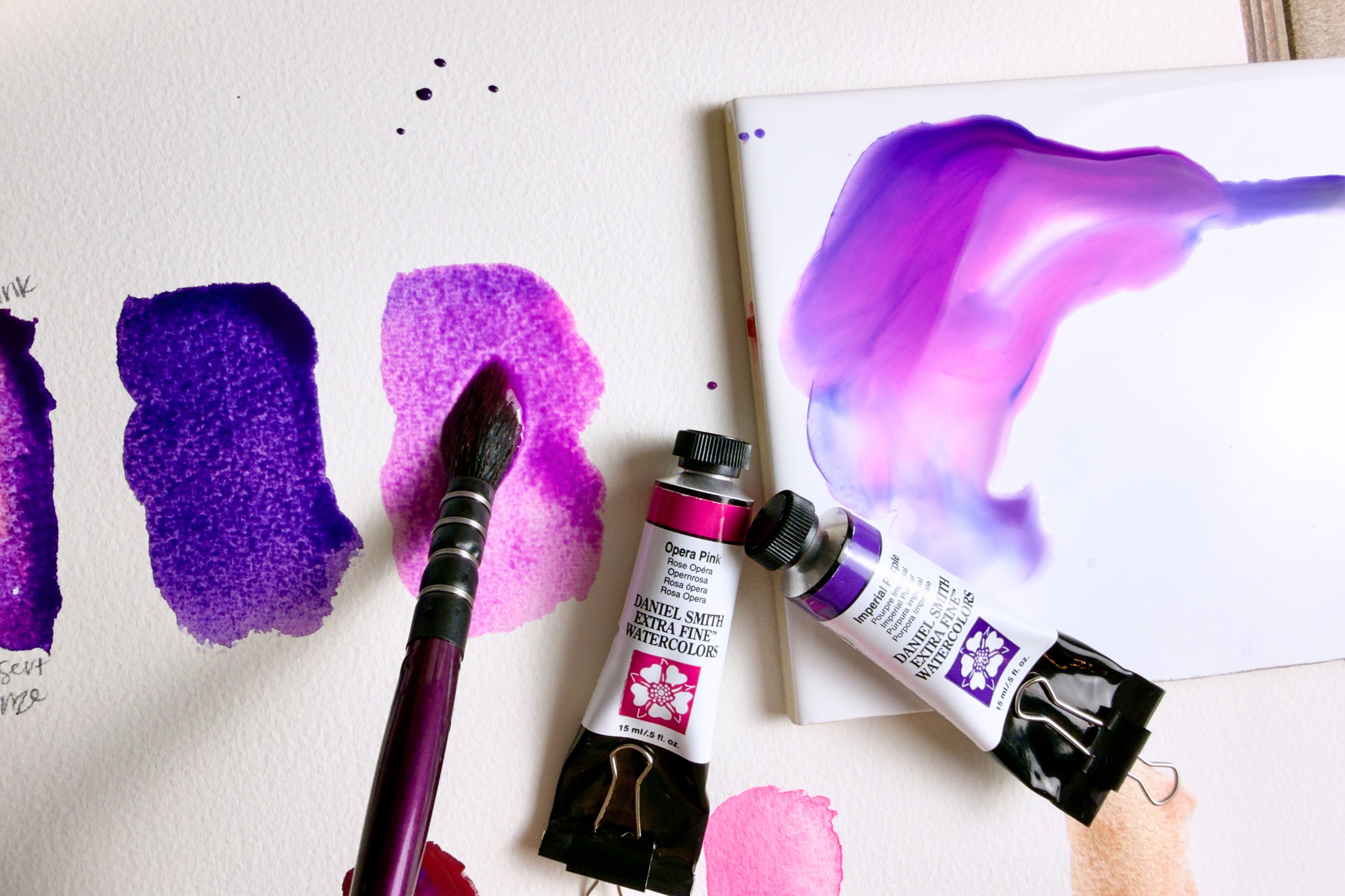
This mixture makes a vibrant pink-violet color almost resembling Cobalt Violet! It will be fun to layer the Luminescent watercolors over the top once it’s dry and see the color shift!
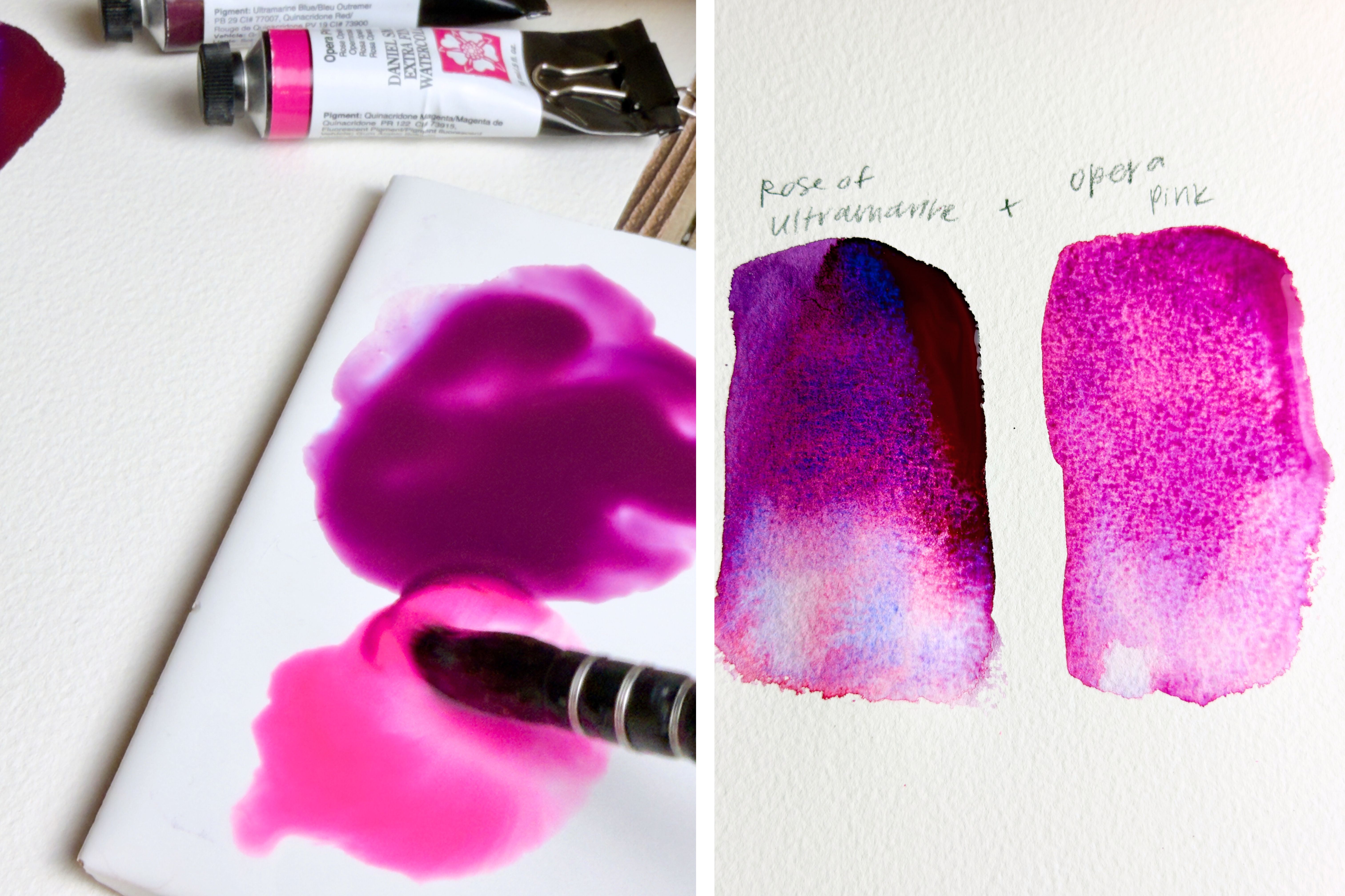
When Rose of Ultramarine meets Opera Pink, the result is a vibrant, glowing magenta that feels full of life. The granulation from Rose of Ultramarine adds subtle texture and depth, while Opera Pink infuses a bright, modern energy. Together, they strike a perfect balance—cool and warm, soft and bold—creating a rich, luminous color that’s perfect for florals, shadows, or anywhere you want a touch of warmth and vibrancy. It’s the perfect potion for painting twilight blossoms or spellbound skies.
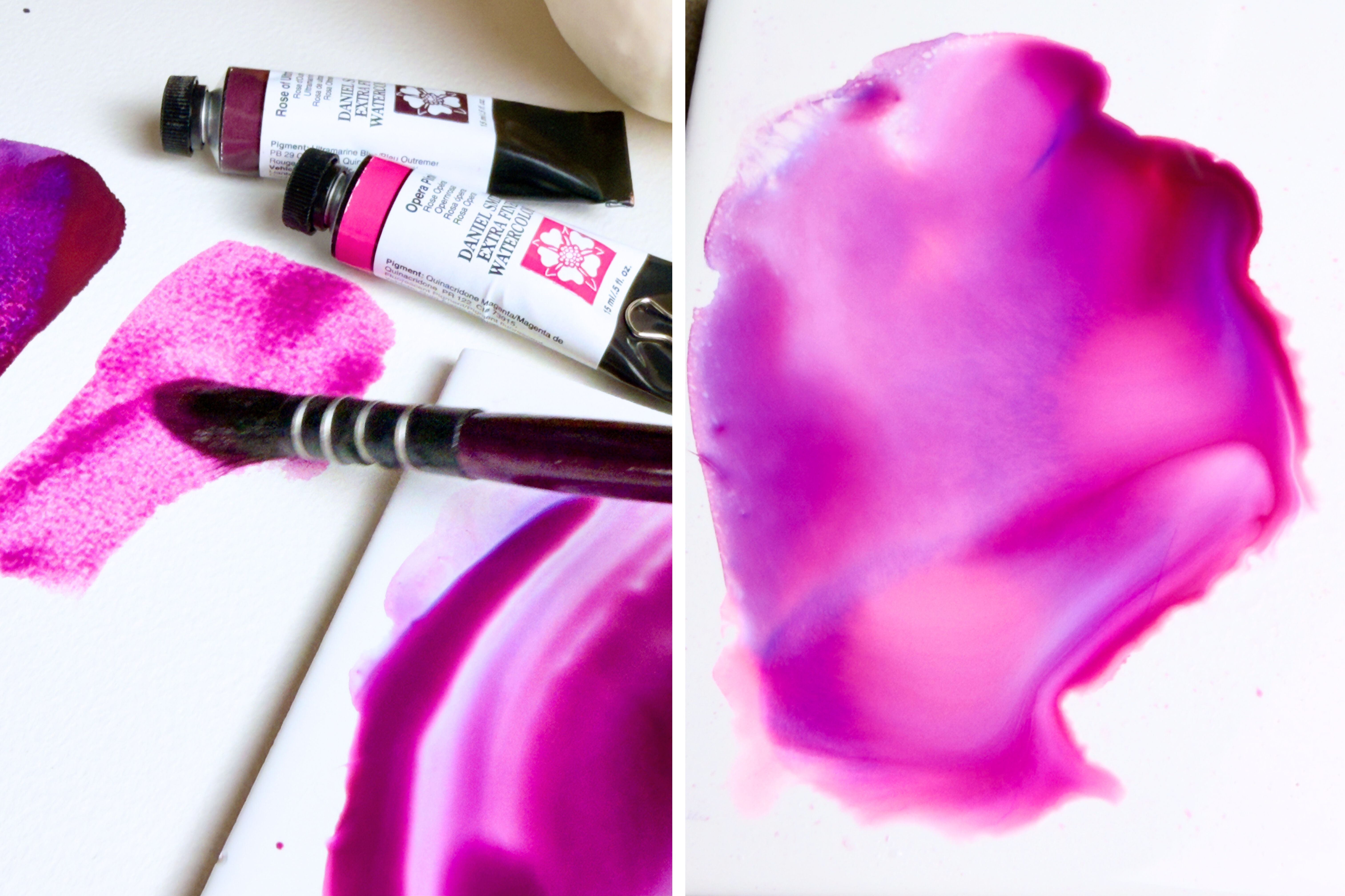
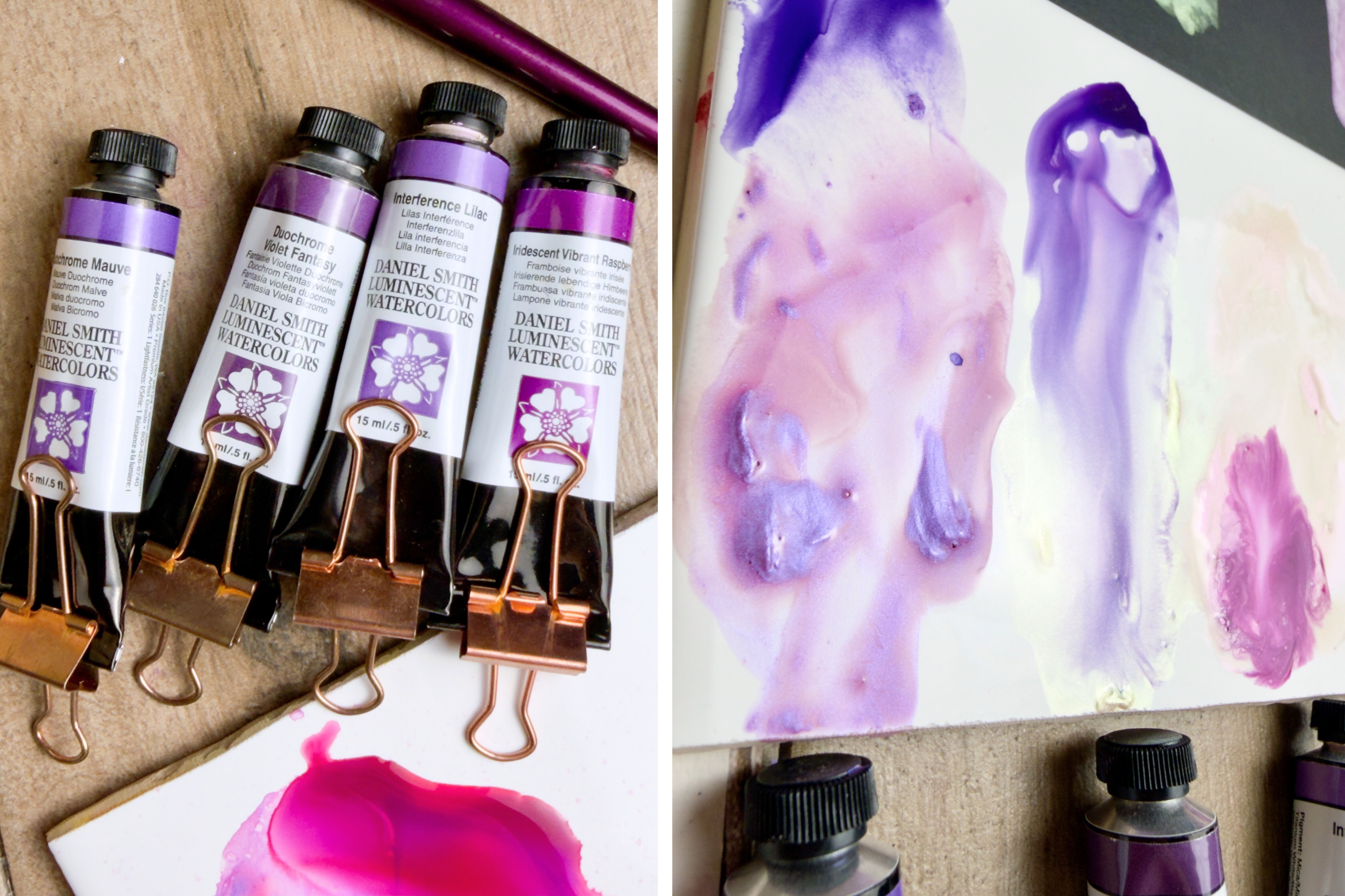
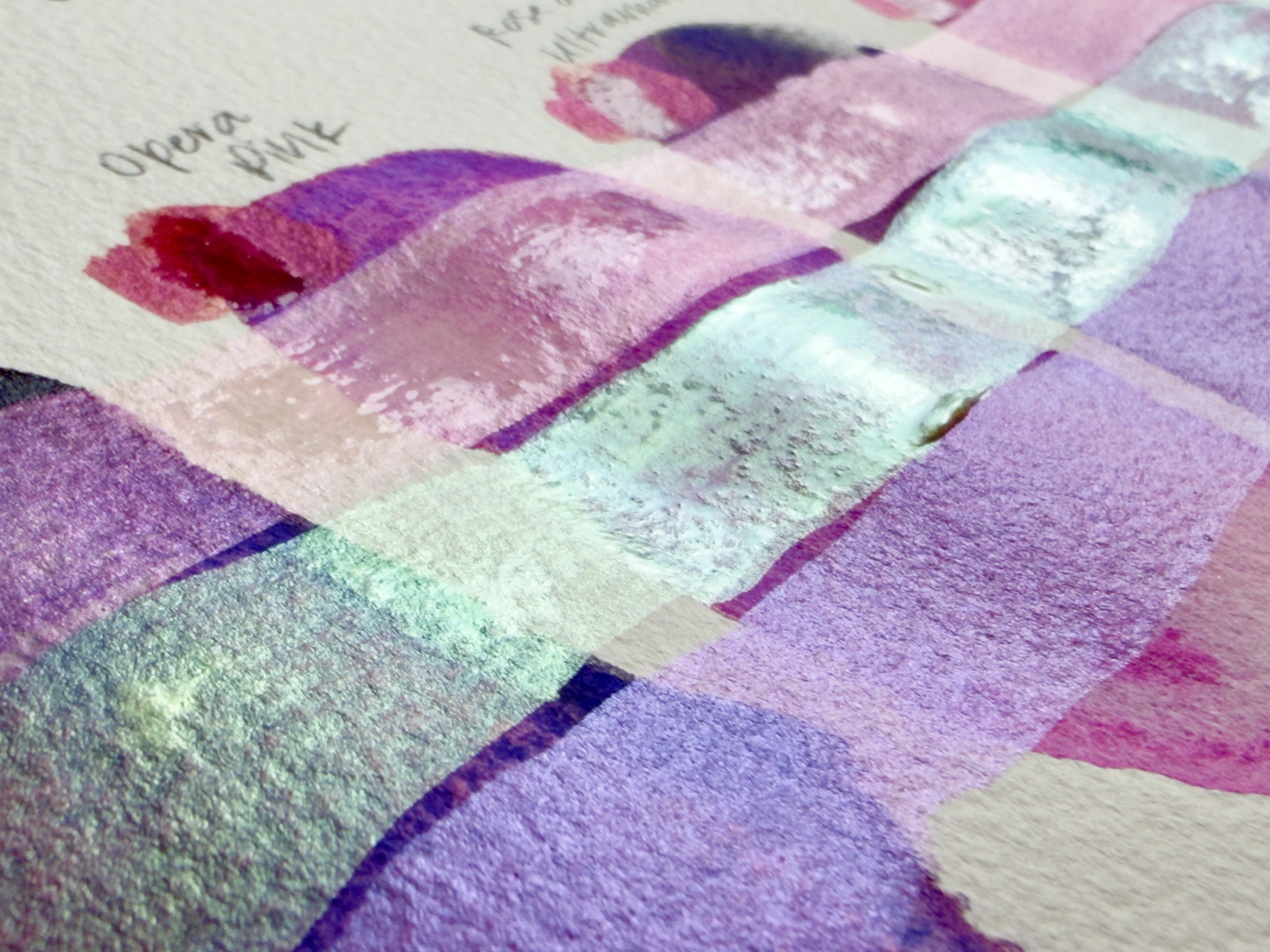
Some of the DANIEL SMITH Luminescent colors are almost invisible on their own, but once painted on black paper or a darker color, they really come to life! Duochromes and Interference colors knocked my socks off the first time I tried them on black paper!
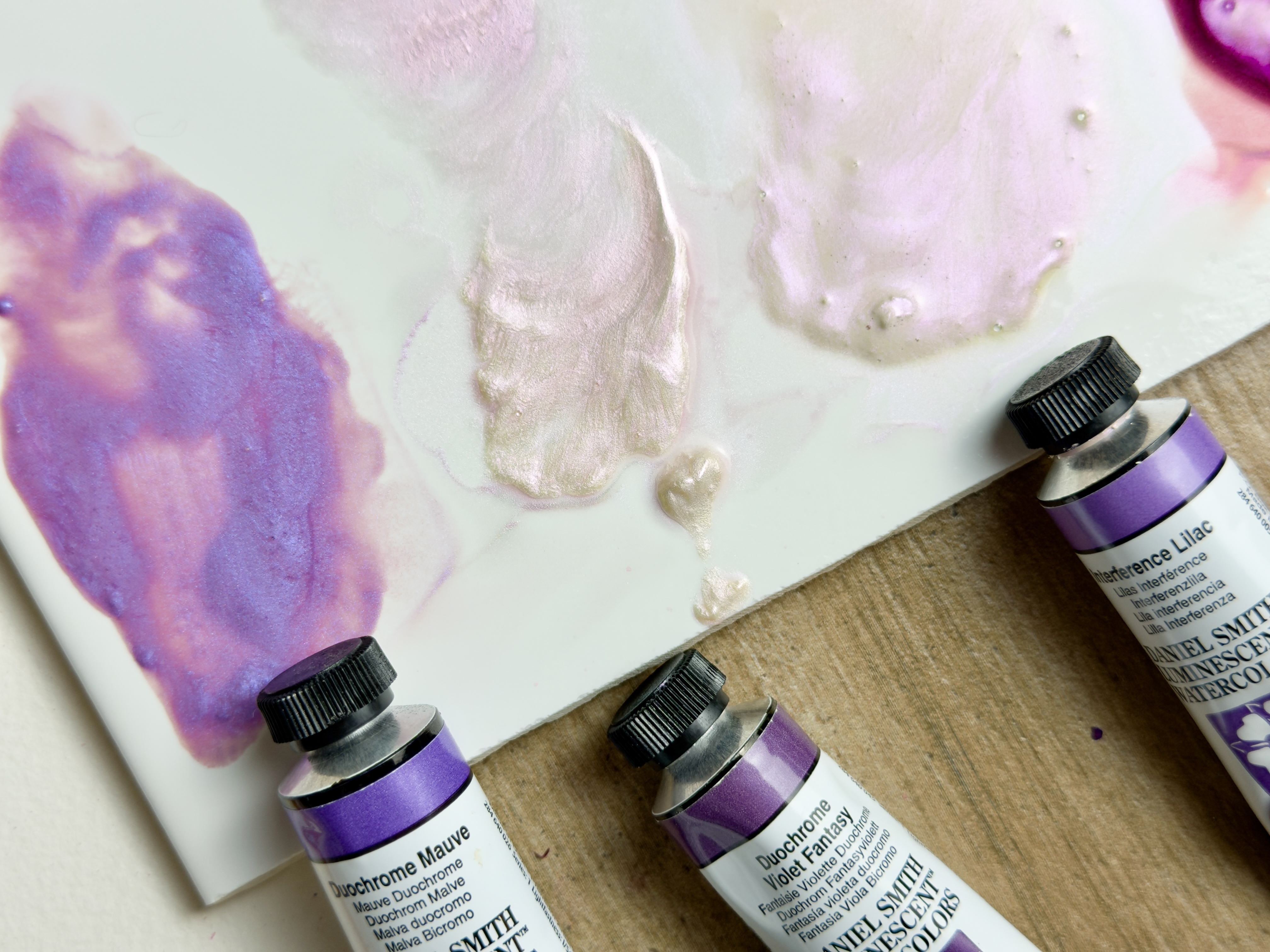
Here they are on the palette, and as you can see, the two in the middle are quite light. But watch what happens when I apply them on black paper!
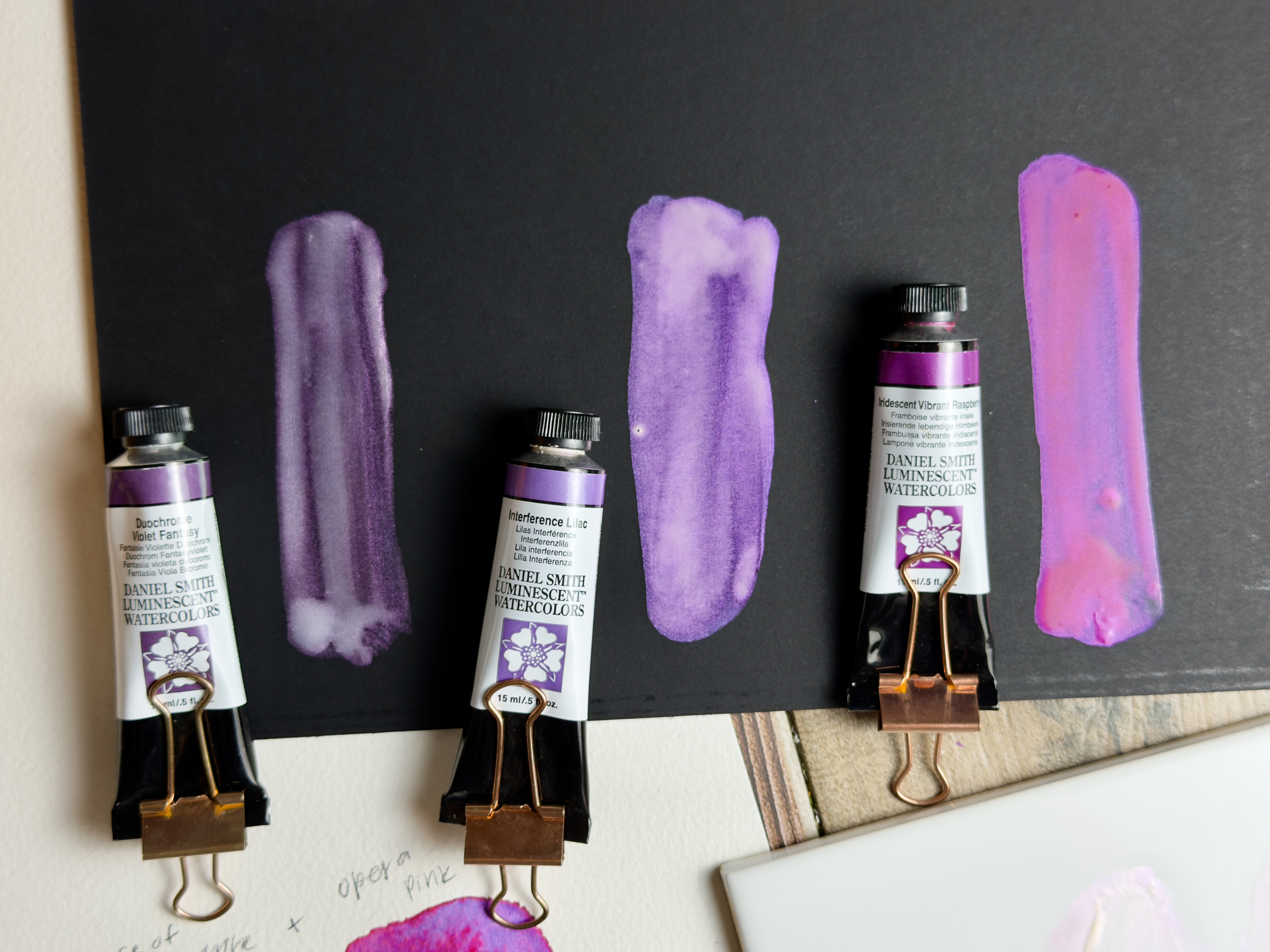
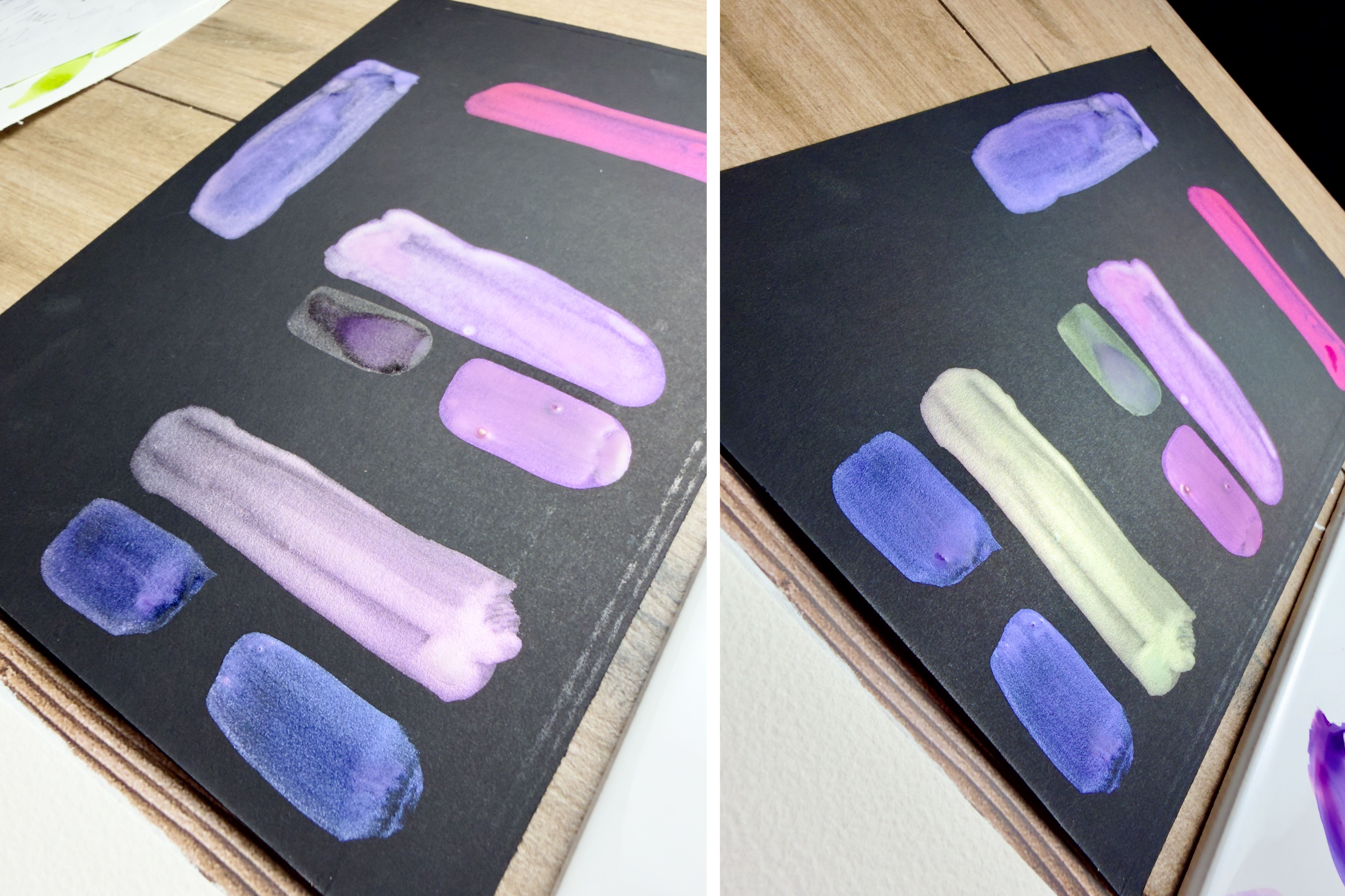
Above, you can see the color shift when I adjust the angle!
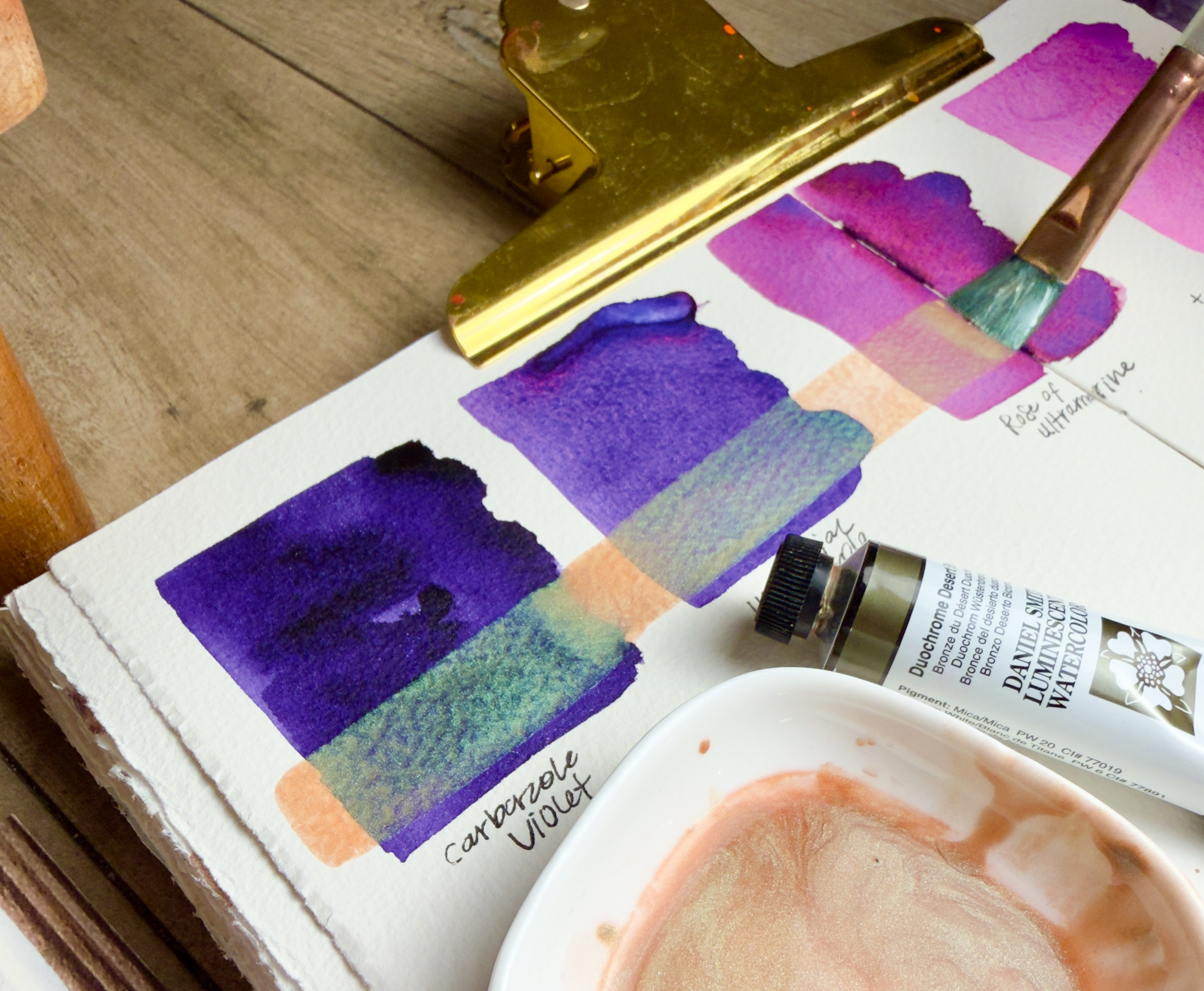
Now here’s where the fun begins! When brushed over deep purples like Carbazole Violet or Imperial Purple, Duochrome Desert Bronze transforms the surface with an unexpected, ghoulish green glow. Its bronze base shifts toward olive and eerie green in the light, settling into the texture of the paint below and catching every ridge of granulation. The result is subtle but mesmerizing—a color that seems to come alive when tilted, like a shadow flickering under moonlight.
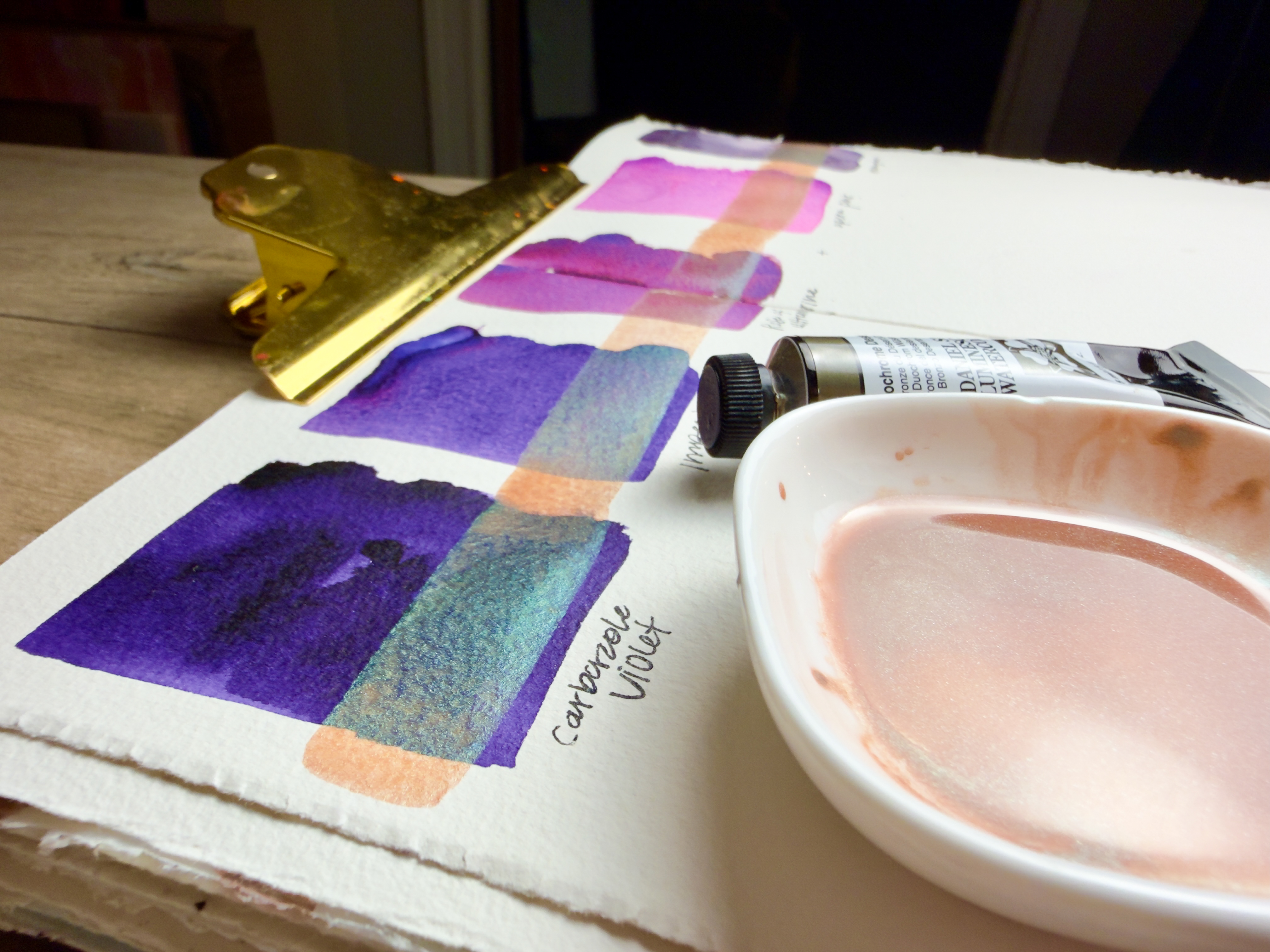
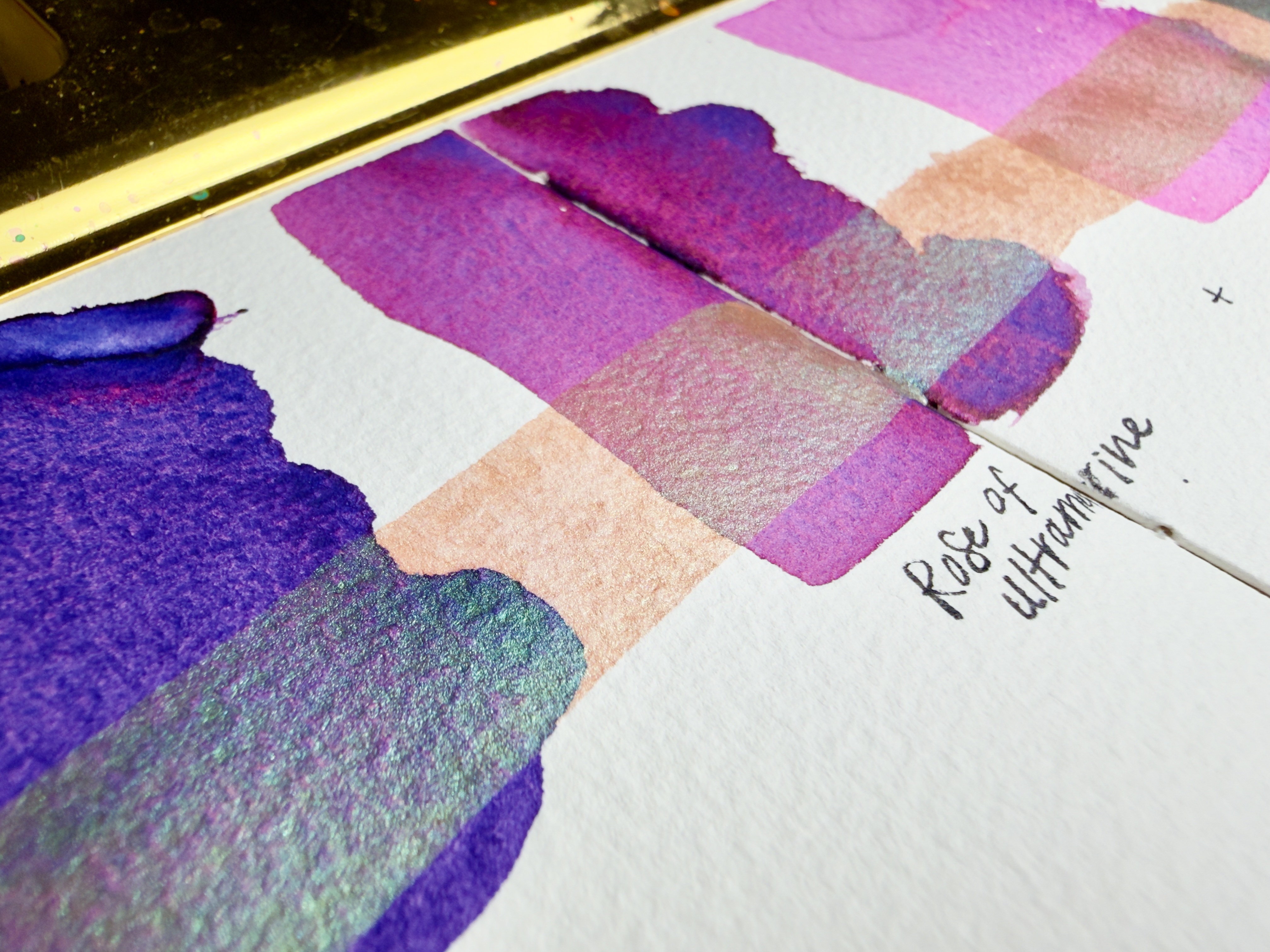
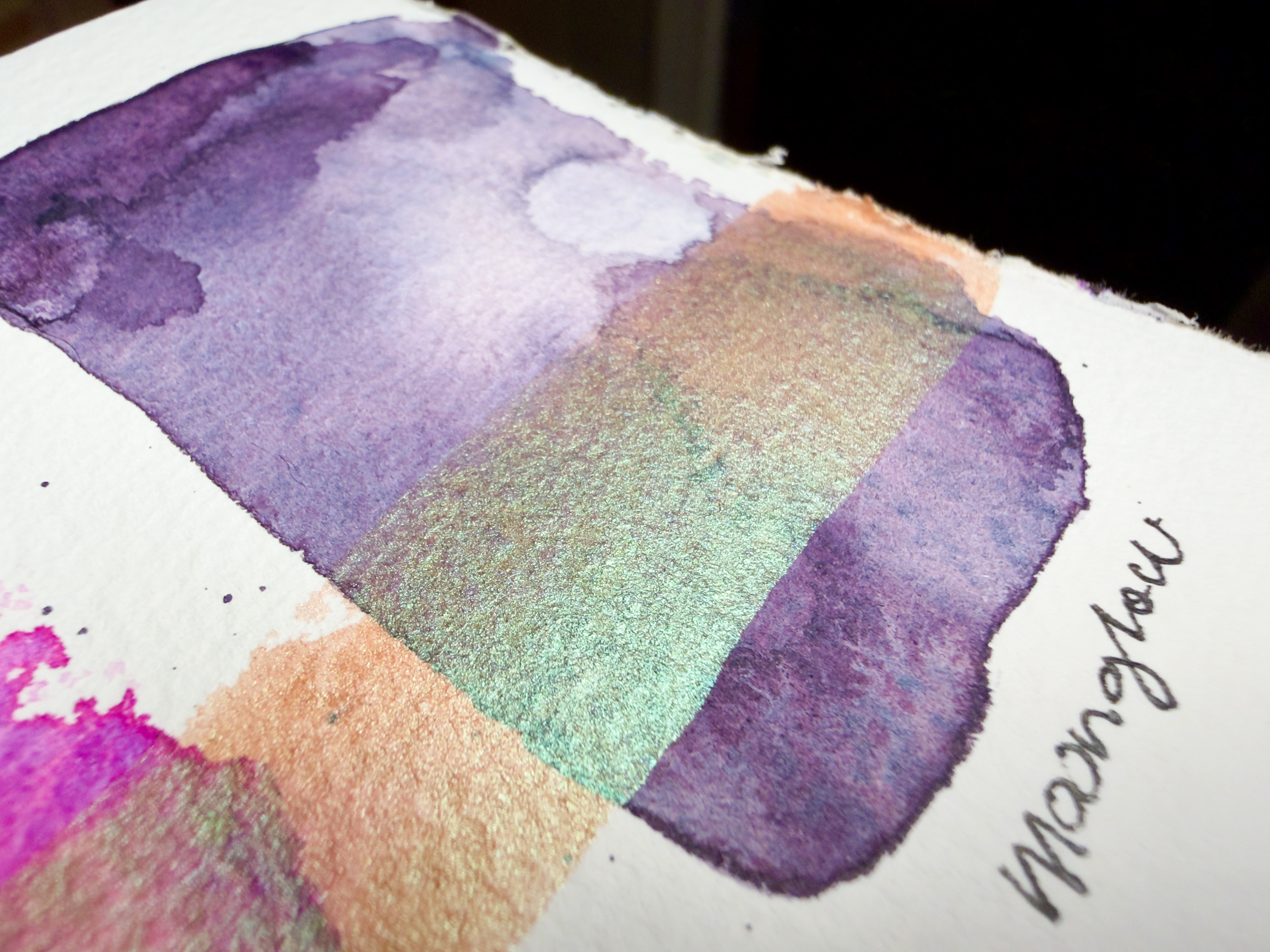
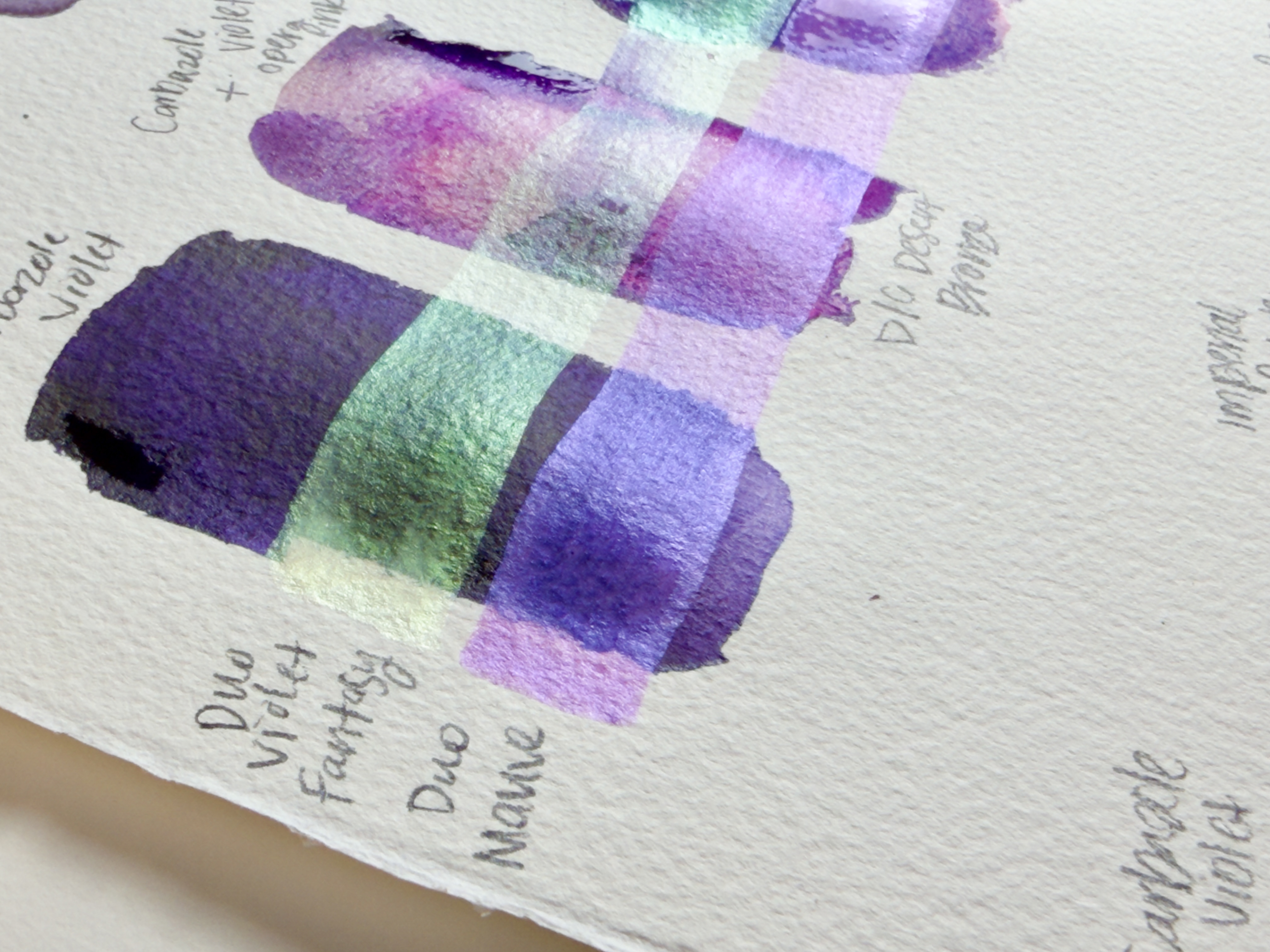
When layered over the top of dark paint, these two colors SHIFT in an exciting and unexpected way! Duochrome Mauve deepens into a blue-violet shimmer, and Duochrome Violet Fantasy shifts from purple to aqua green!! But what if you mix them into the same colors?
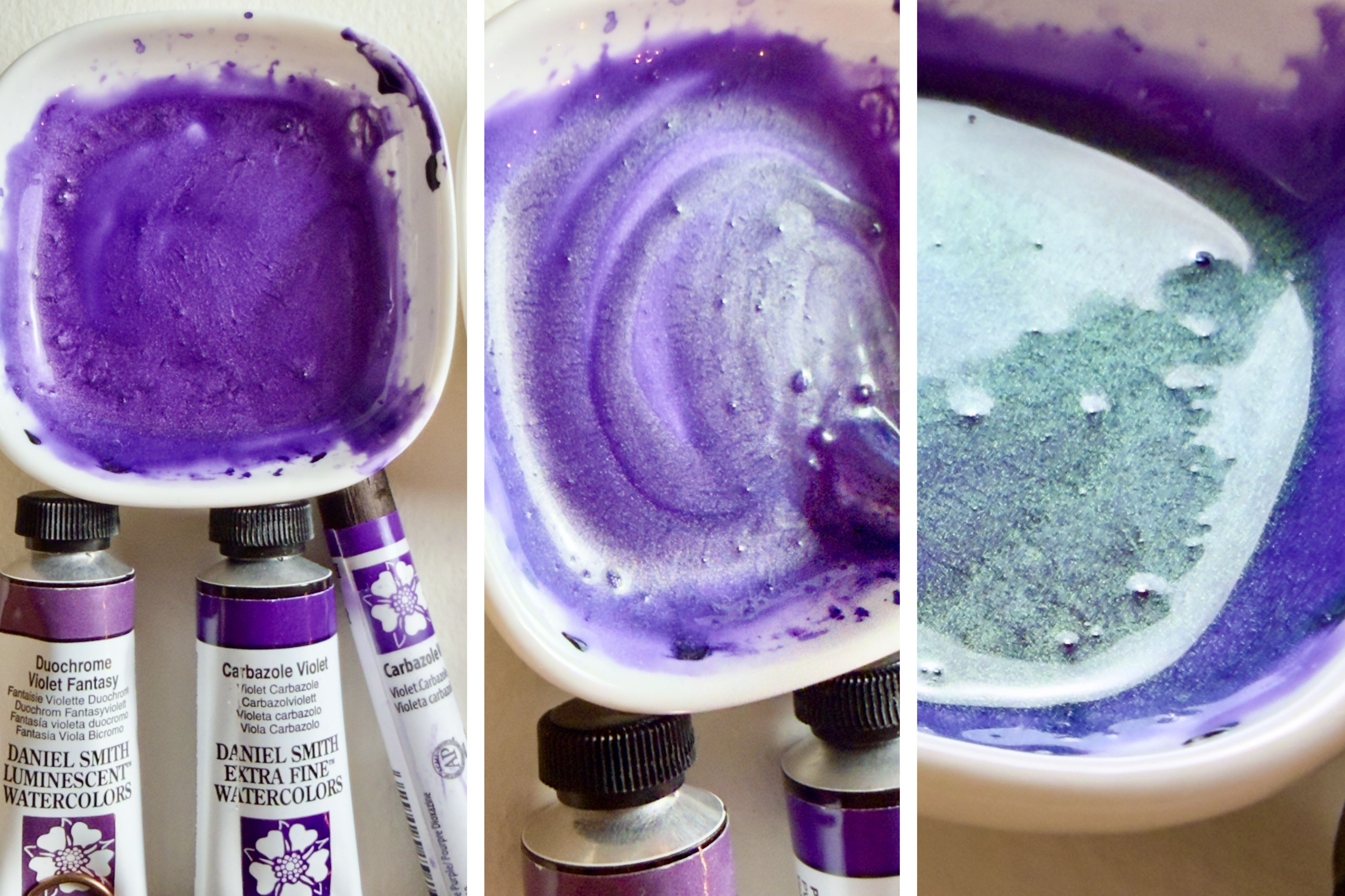
When viewed straight on, the color appears to be a soft, shimmery purple—but tilt the paper, and that stunning blue-green shift suddenly comes to life! I also mixed the rest of the Luminescent Watercolors with different purples to explore how each one transforms when layered. The results are full of surprises—shifts, sparkles, and subtle changes that make every mix feel like a little experiment in light.
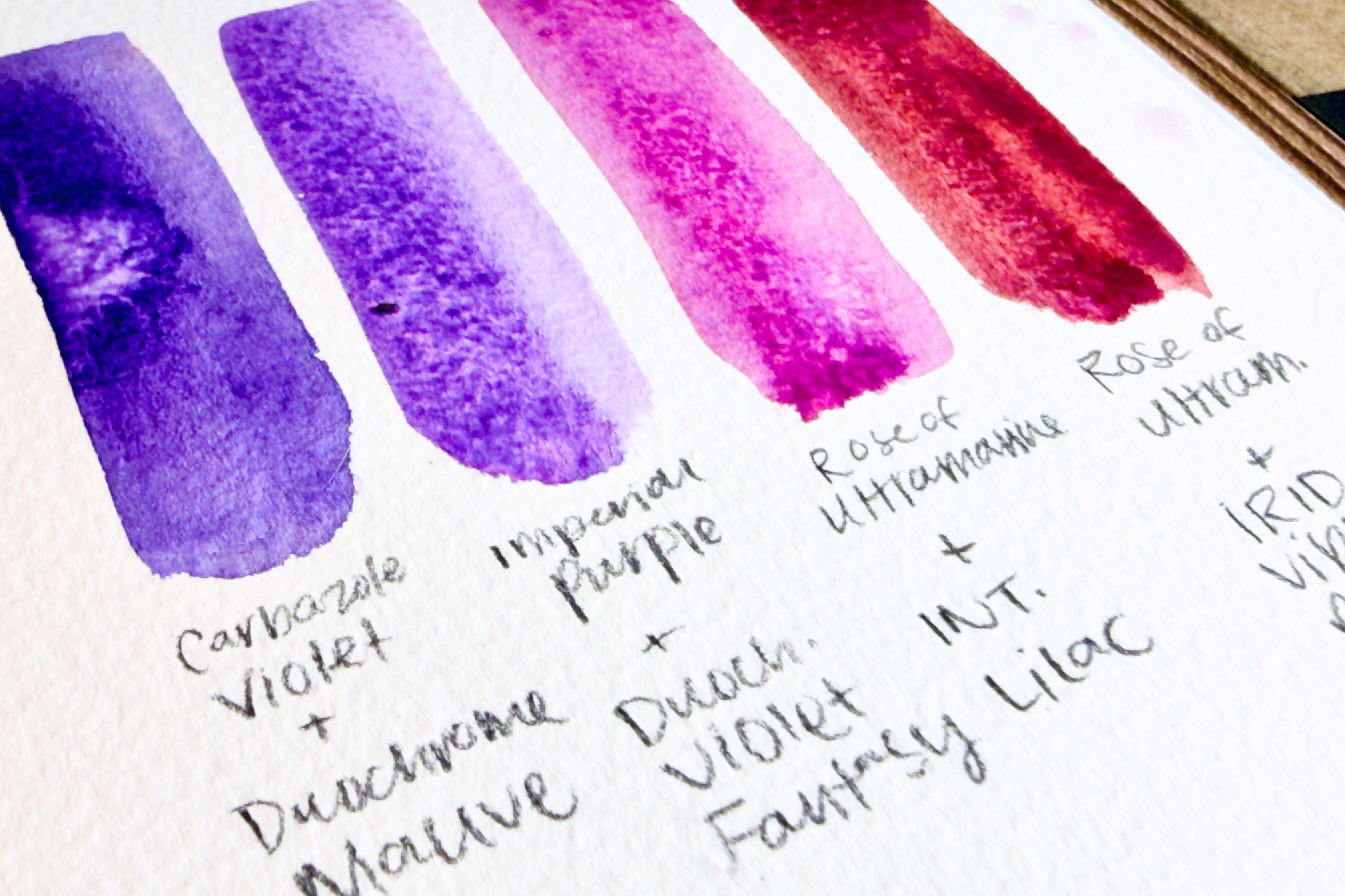
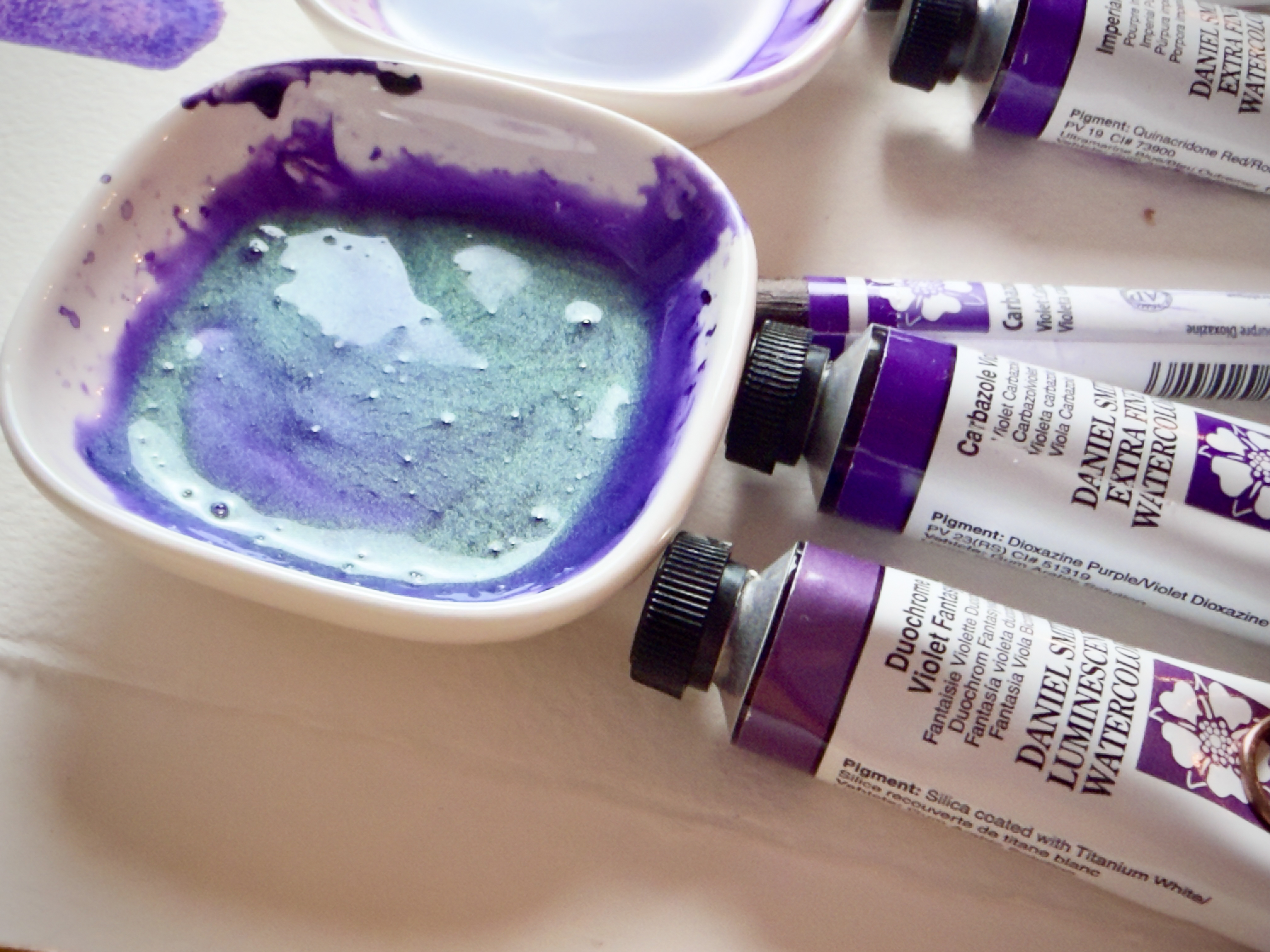
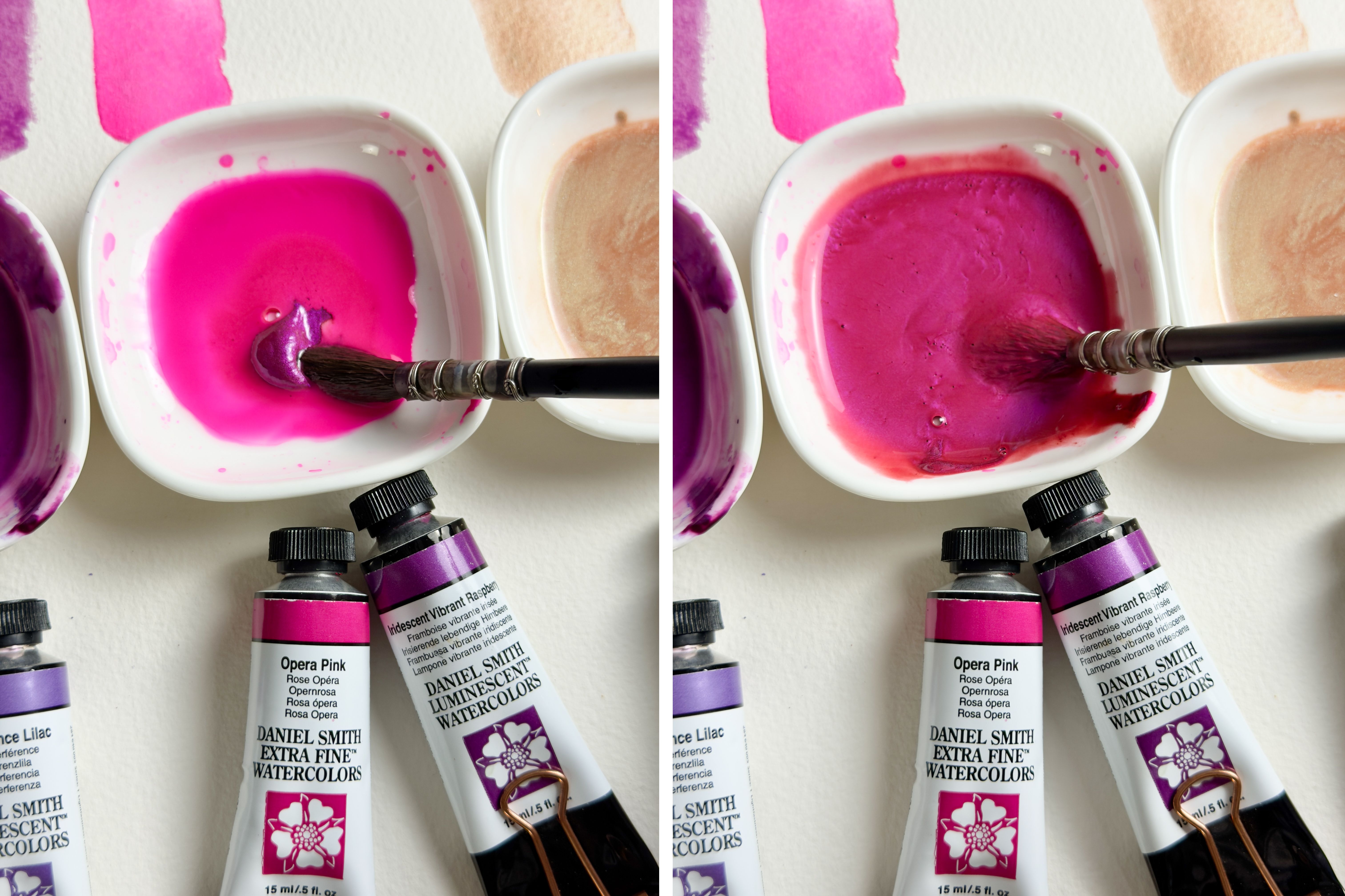
Layering Iridescent Vibrant Raspberry over Opera Pink takes an already bold color and turns up the volume. The bright, almost fluorescent pink of Opera Pink glows from beneath, while the metallic shimmer of Vibrant Raspberry adds a pearlescent sheen that catches the light beautifully. The result is an intense, luminous pink with a subtle sparkle—radiant, playful, and full of energy. It’s the kind of mix that instantly draws the eye, perfect for adding a touch of shine to petals, highlights, or abstract work.
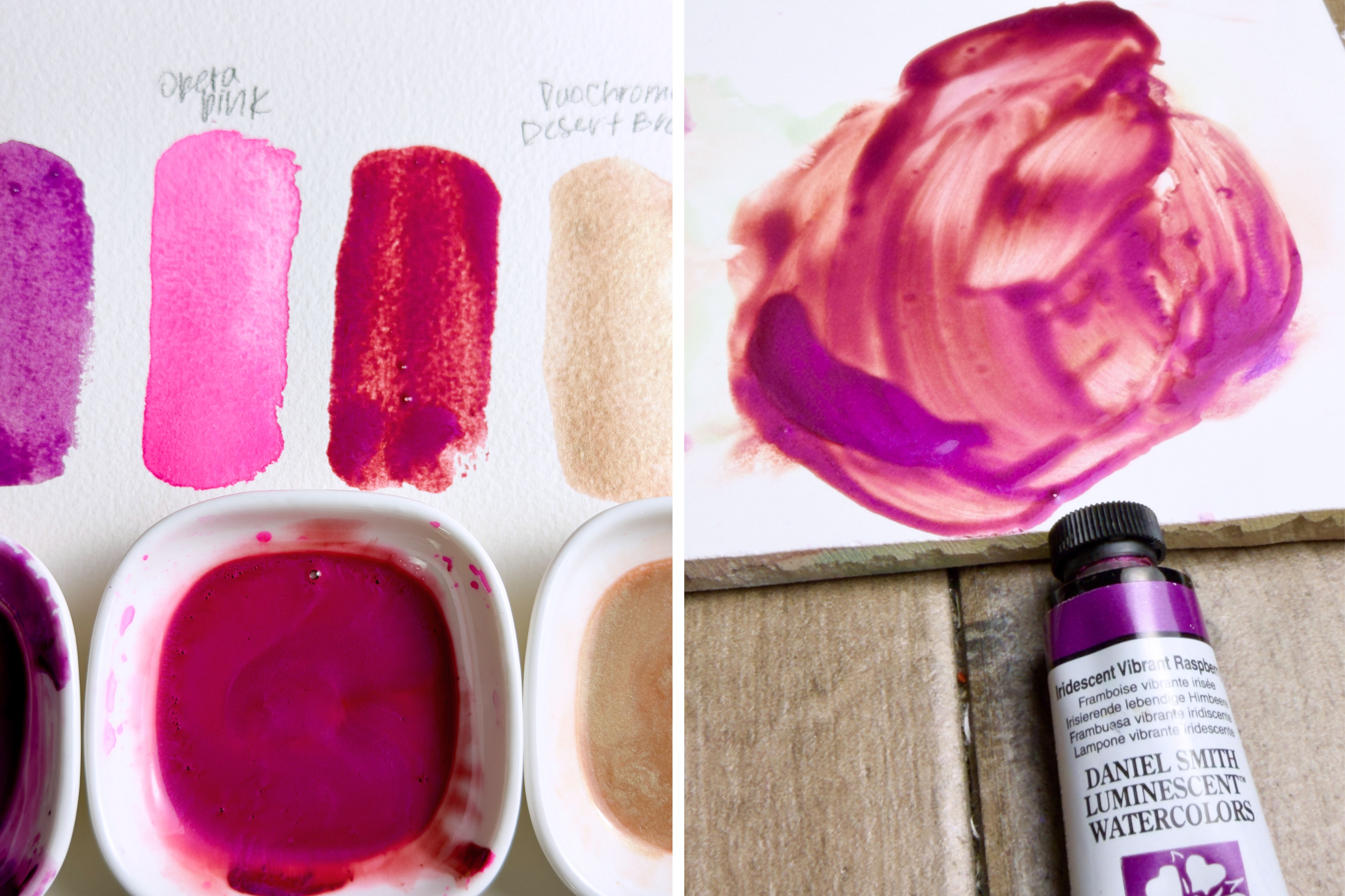
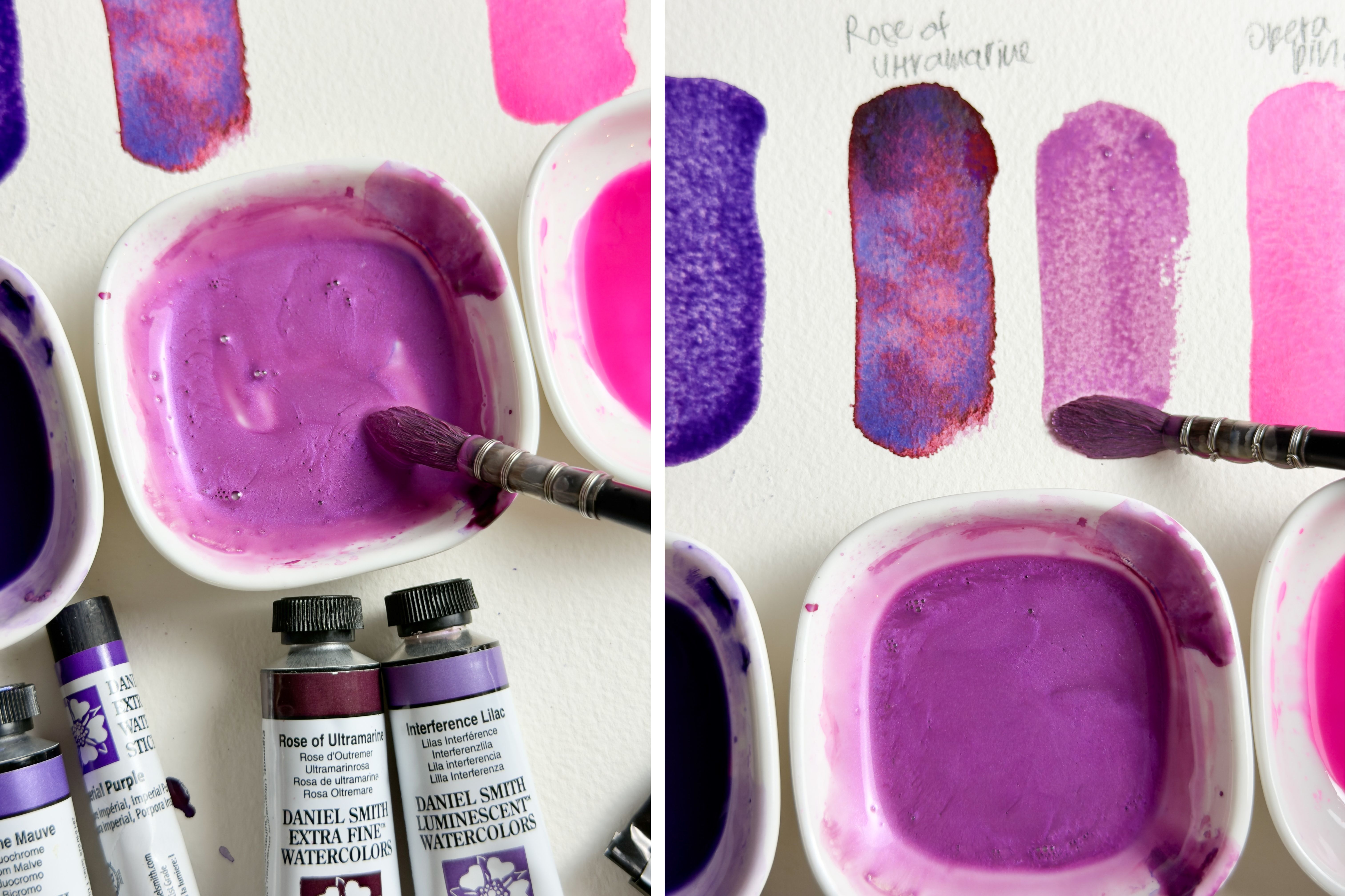
When mixed together, Rose of Ultramarine and Interference Lilac create a soft, opalescent violet that shimmers with a hint of pearly light. The granulating texture of Rose of Ultramarine gives the mix gentle movement, while the Interference Lilac adds a subtle, cool sheen that shifts as the light changes.
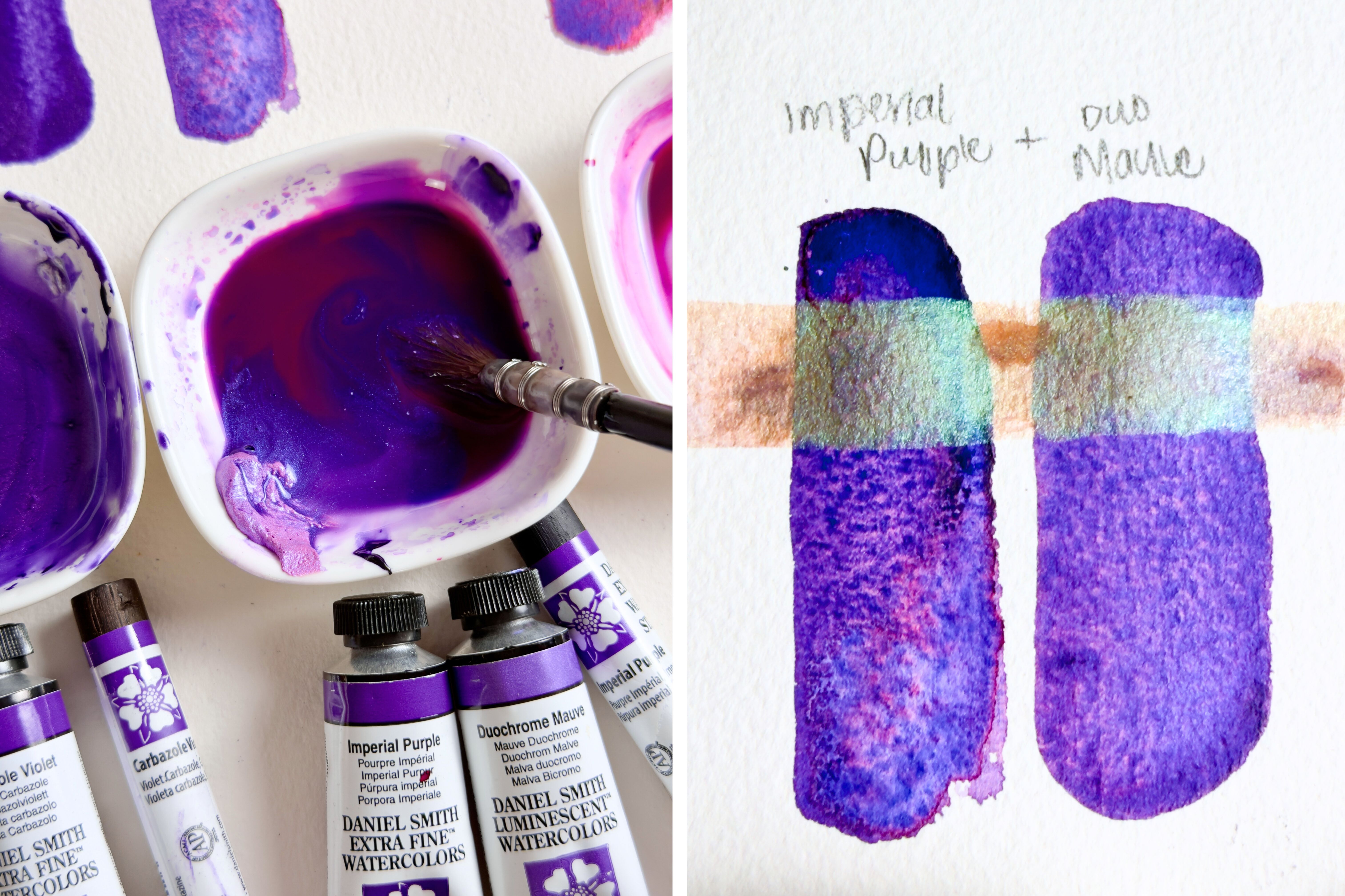
The only way to know which you prefer is to try it out! The camera cannot always catch what the eye can see, especially when it comes to sparkle and shimmer! Try it for yourself! I had so much fun experimenting with these concoctions! I truly felt like I was in a dungeon stirring a giant cauldron! (I just wish I had a magic broomstick to help me clean up the glorious mess I made in the studio!)
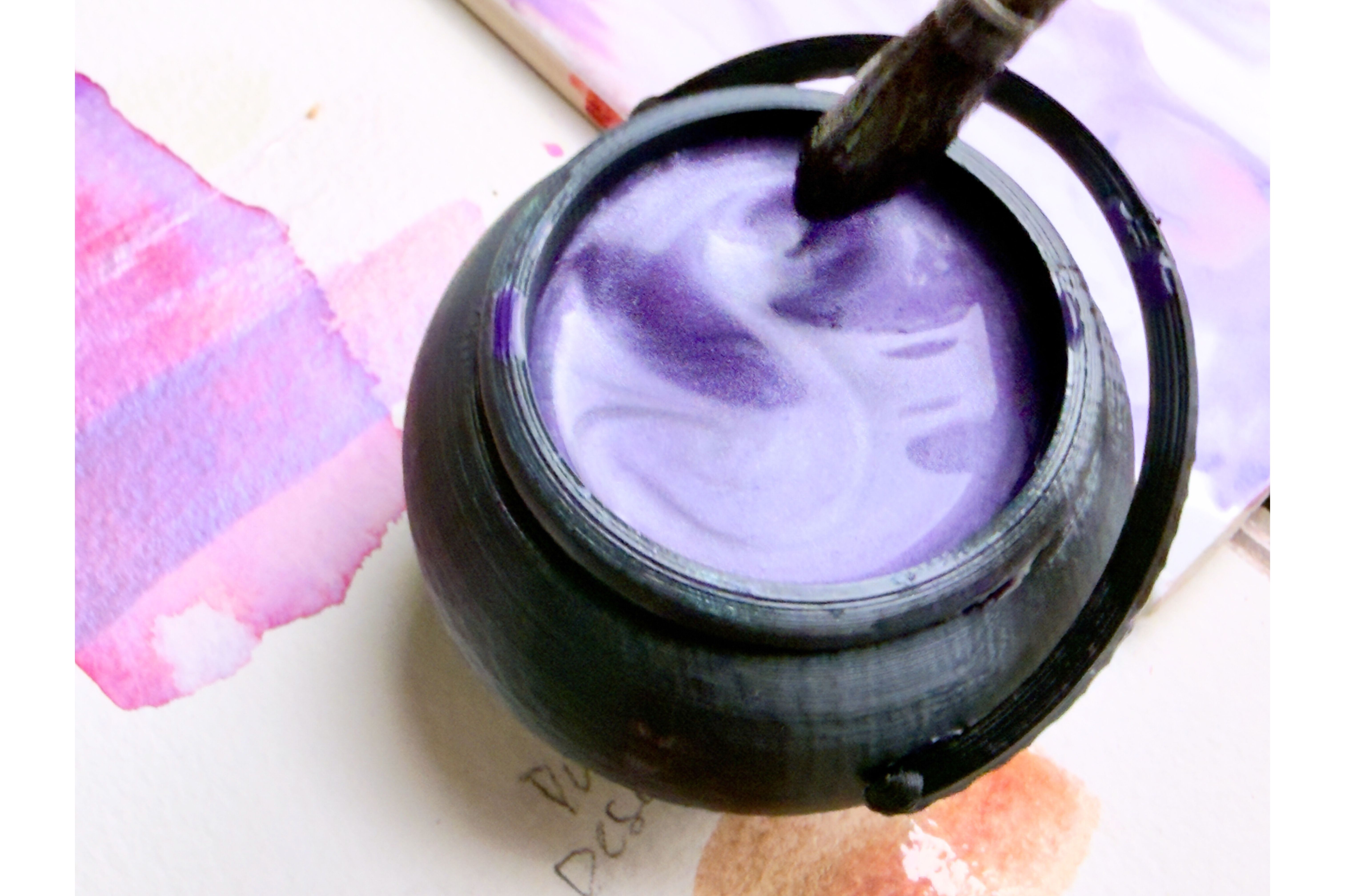
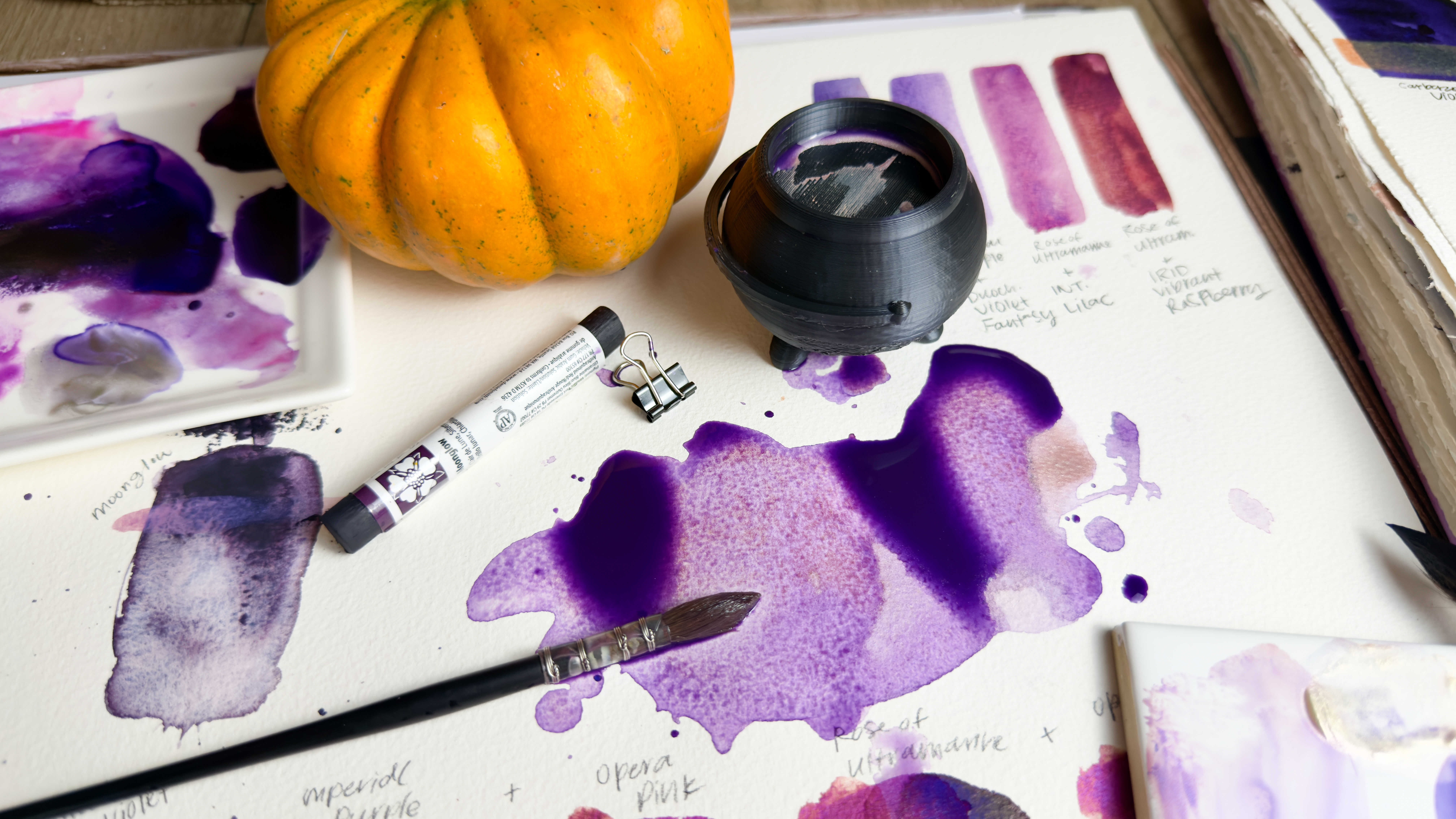
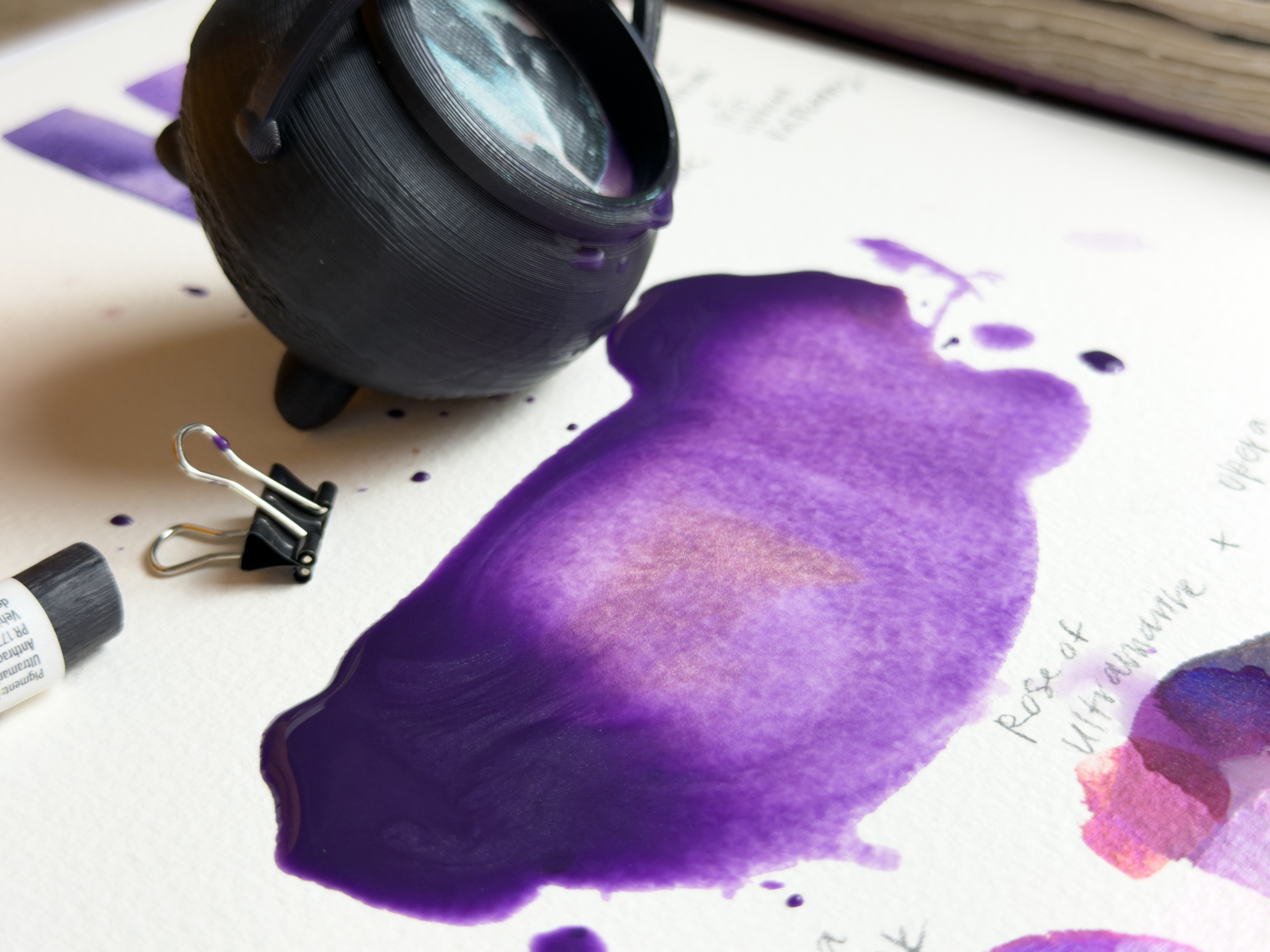
This experiment was so much fun! I hope it inspires you to pull out your watercolors and your magic wands (I mean, brushes!)—to mix up some color magic of your own. There are so many surprises waiting to be discovered in your palette!
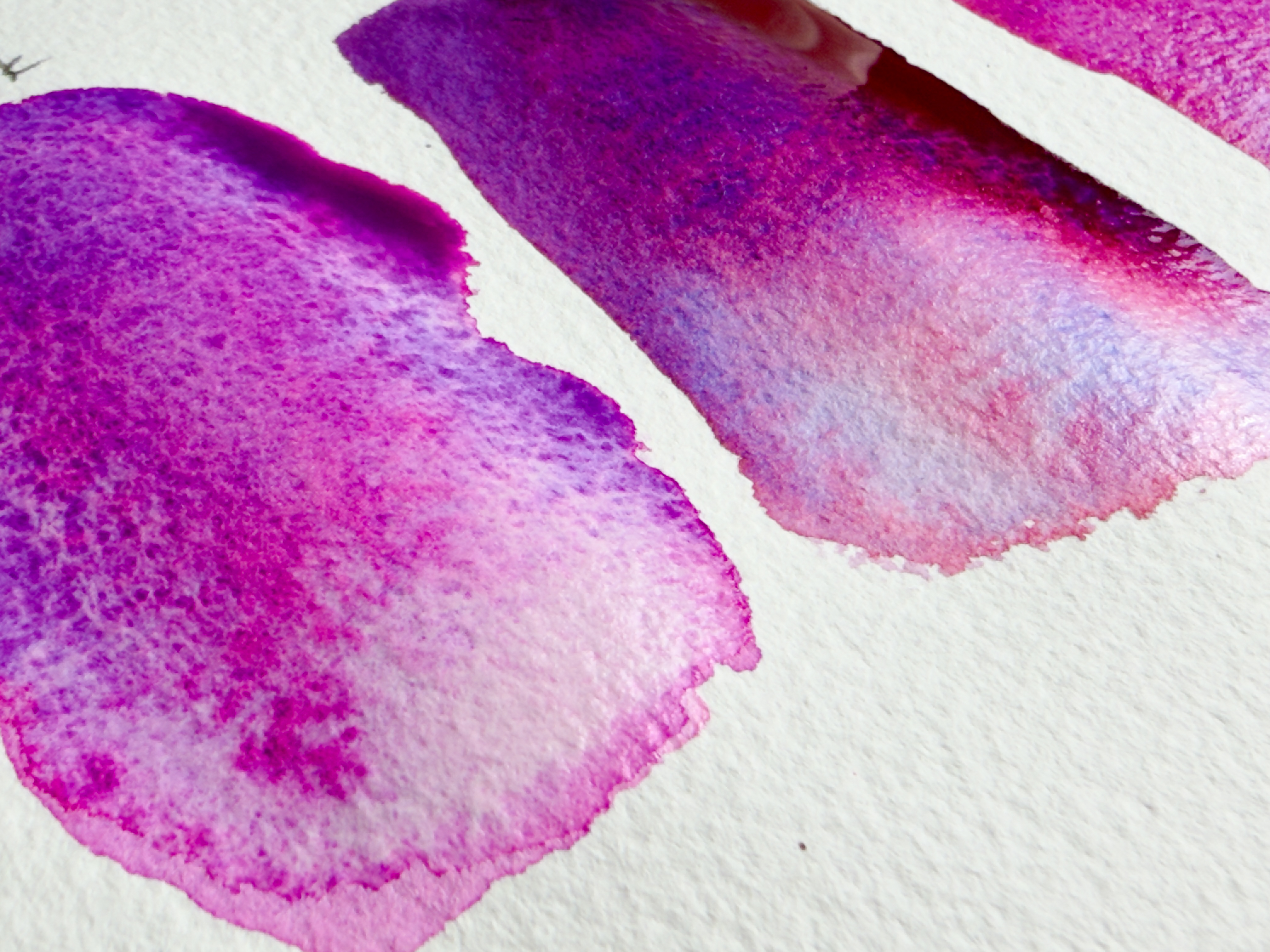
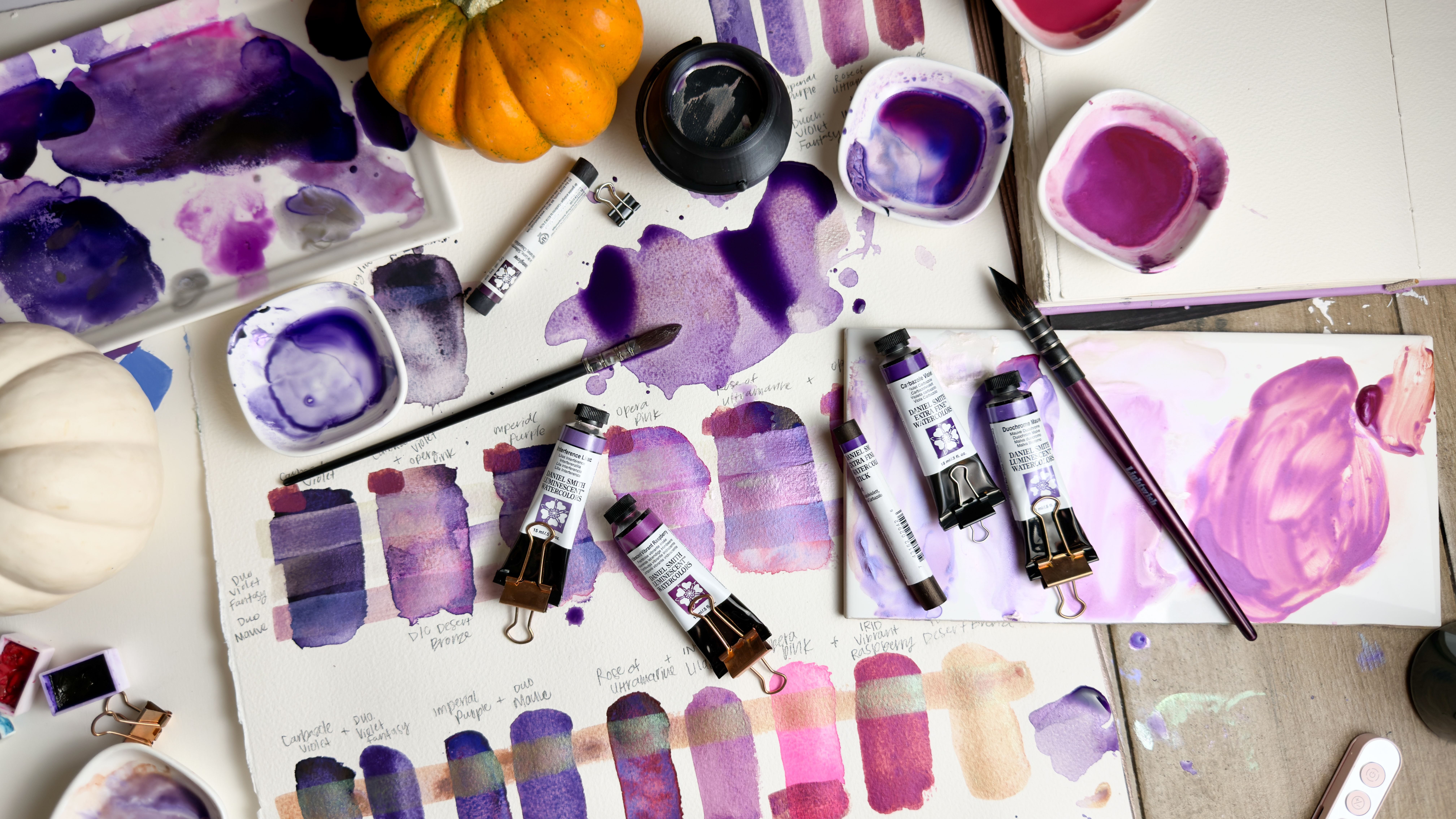
Ешлі з дитинства занурена у мистецтво, писала, малювала та малювала за сімейним столом з 2 років. Протягом понад чотирьох десятиліть творчість переплітається з її життям — вона вивчала мистецтво протягом усієї старшої школи та пройшла численні онлайн-курси та майстер-класи з акварелі. У свої 20-30 років вона працювала професійним фотографом у Юті та Сан-Дієго. У 2016 році вона завершила свій фотобізнес, щоб навчати трьох дітей вдома, і приблизно в той же час повернулася до акварельного живопису.
Зараз вона живе у старій сільській церкві в Айдахо зі своїм чоловіком, двома молодими синами та донькою-підлітком, яка долає труднощі з життям, страждаючи на церебральний параліч. Робота з дому є одночасно необхідністю та благословенням.
Ешлі, горда амбасадорка бренду Daniel Smith з 2023 року, брала на себе замовлення з портретів домашніх тварин, проводила онлайн-майстер-класи та була наставницею для художників по всьому світу. Зараз вона зосереджується на приватному наставництві через Zoom зі своєї затишної студії на горищі, допомагаючи художникам подолати страх, набути впевненості та малювати так, як вони завжди мріяли. Вона використовує свої навички письма, фотографії та мистецтва як фріланс-творець контенту та насолоджується кожною хвилиною цього.

